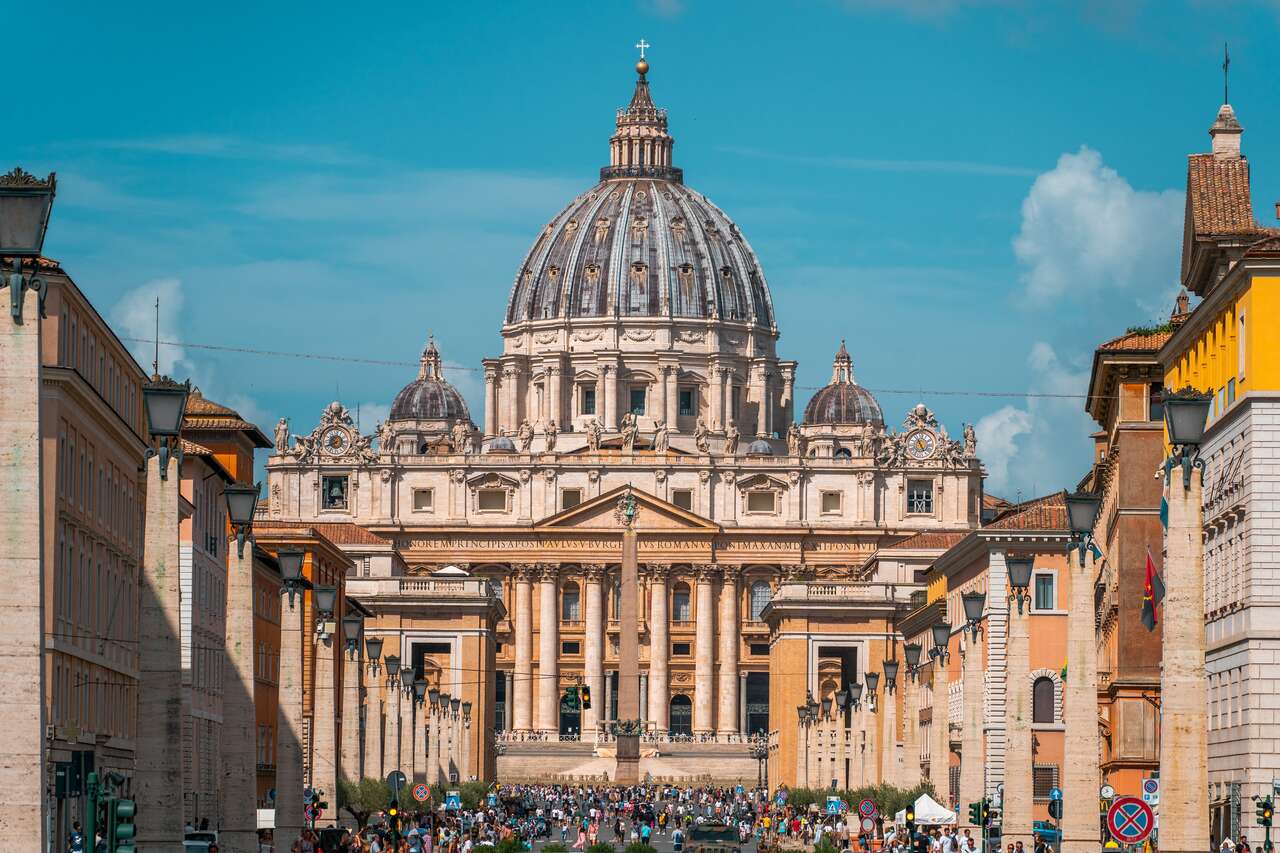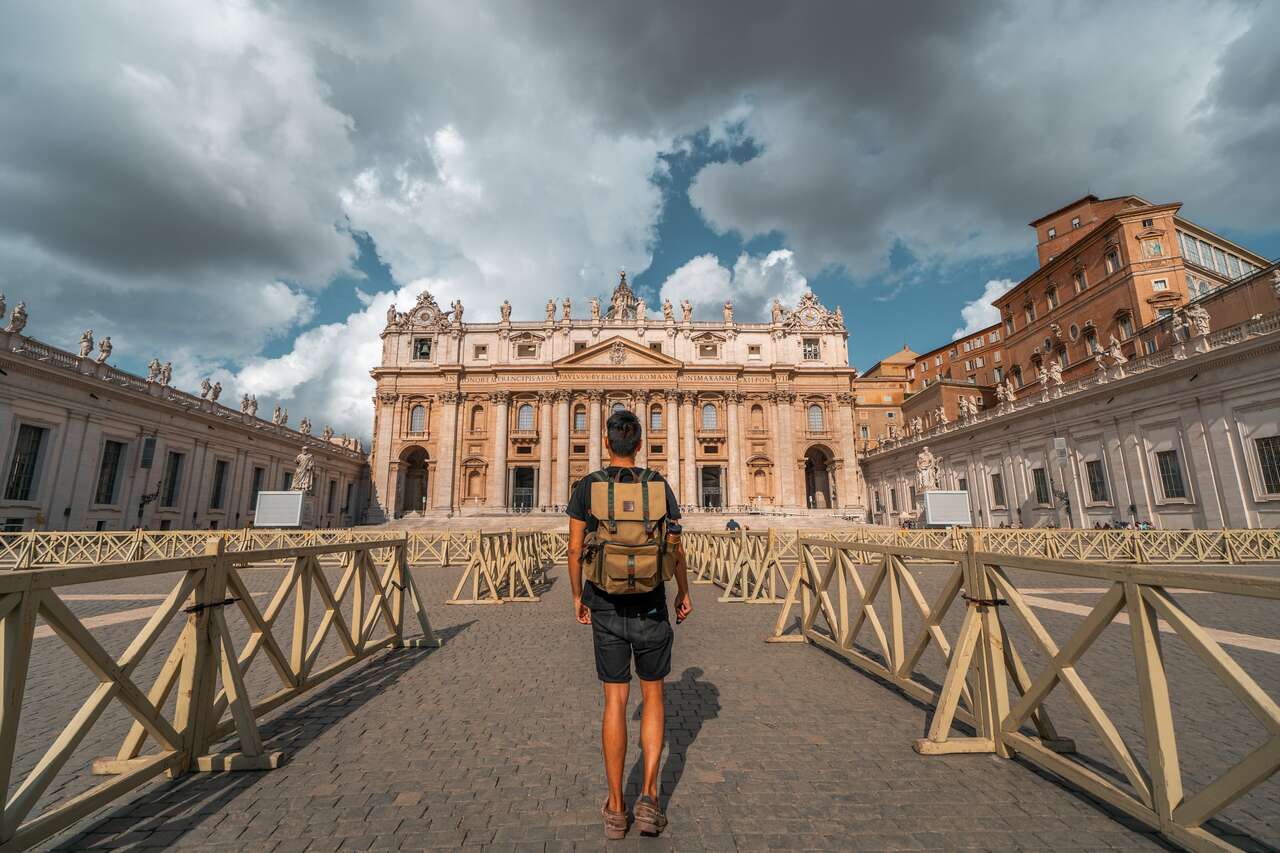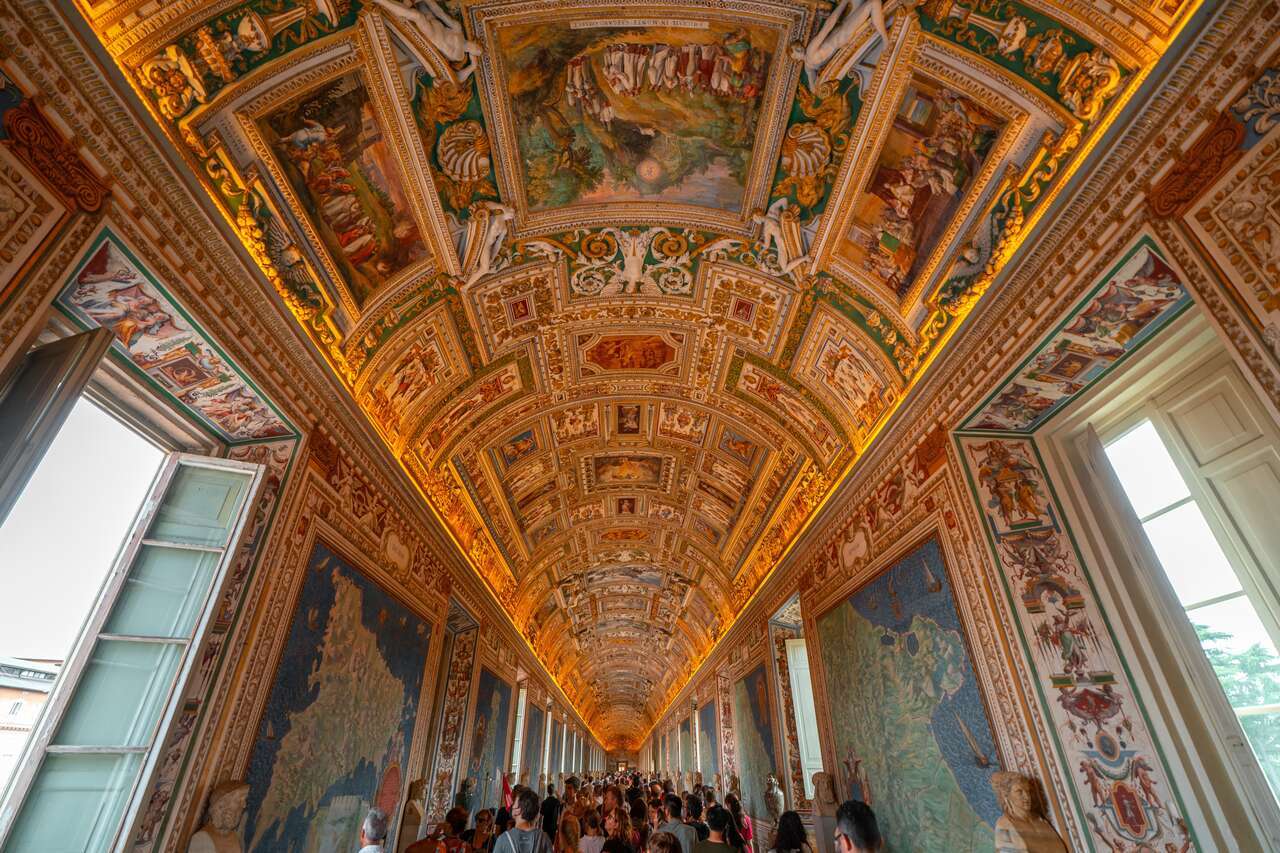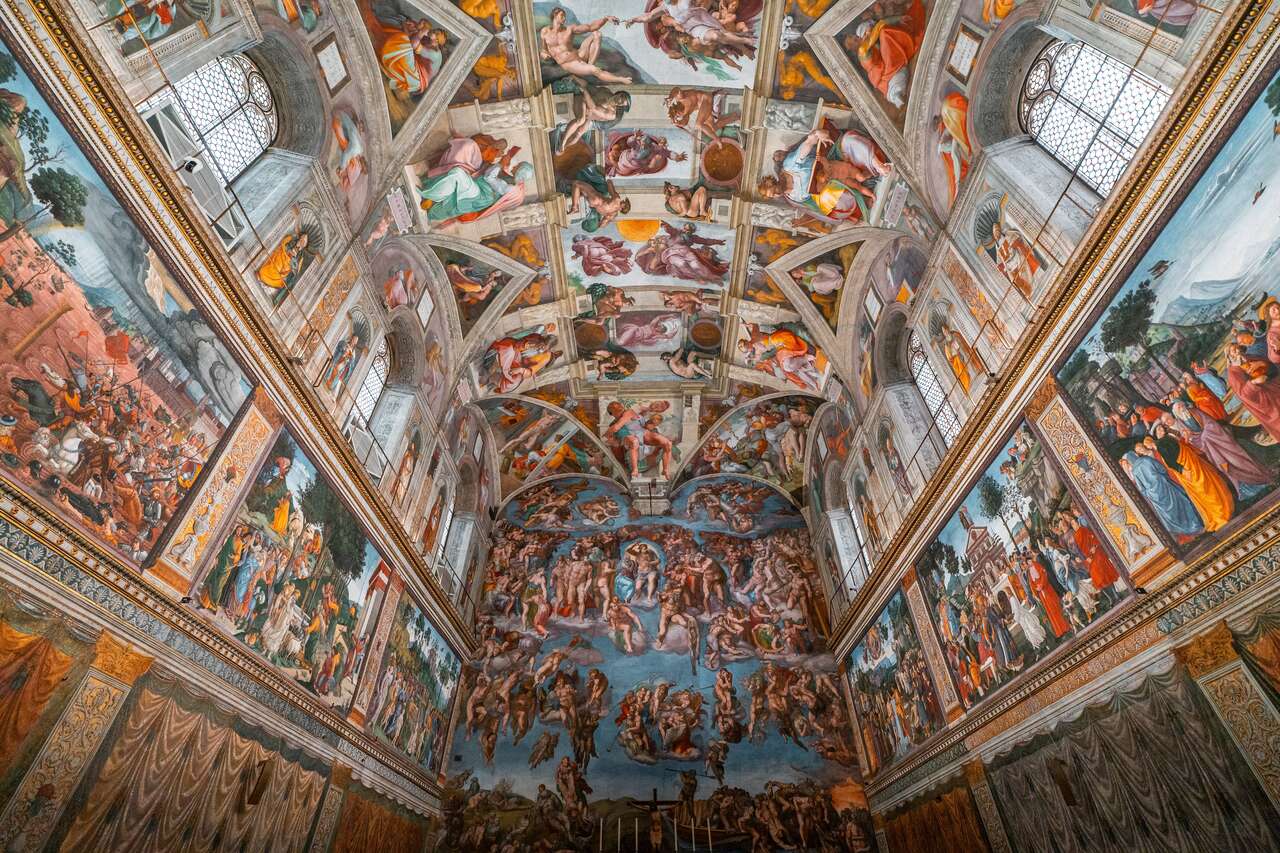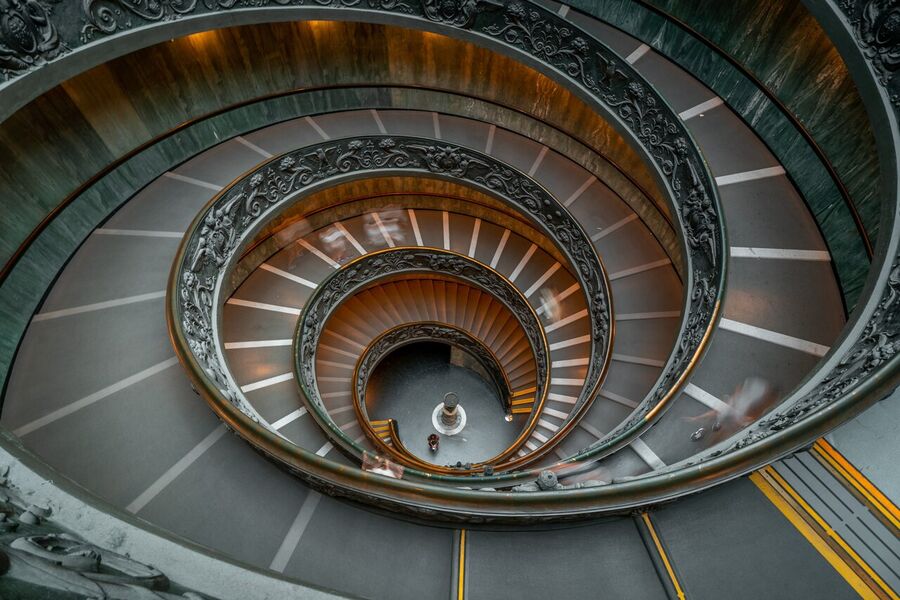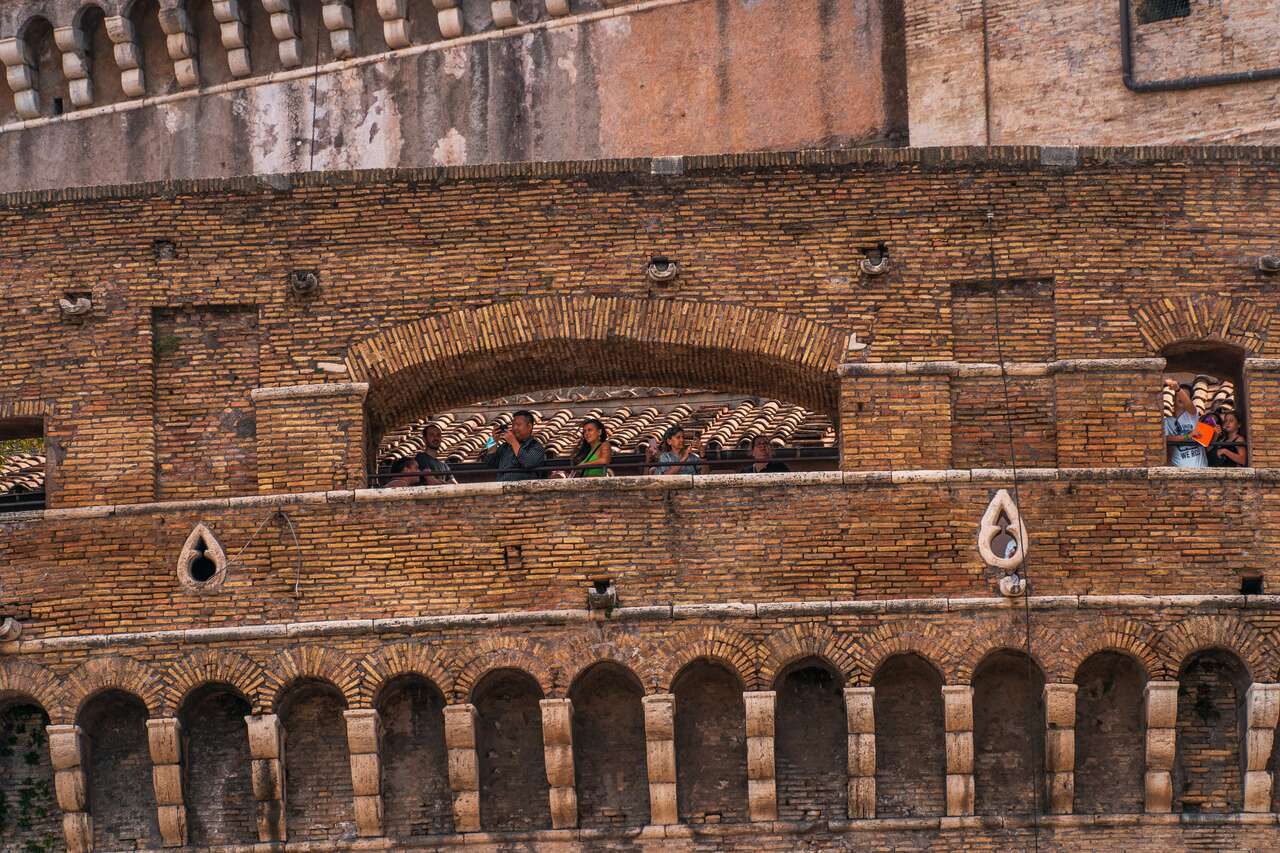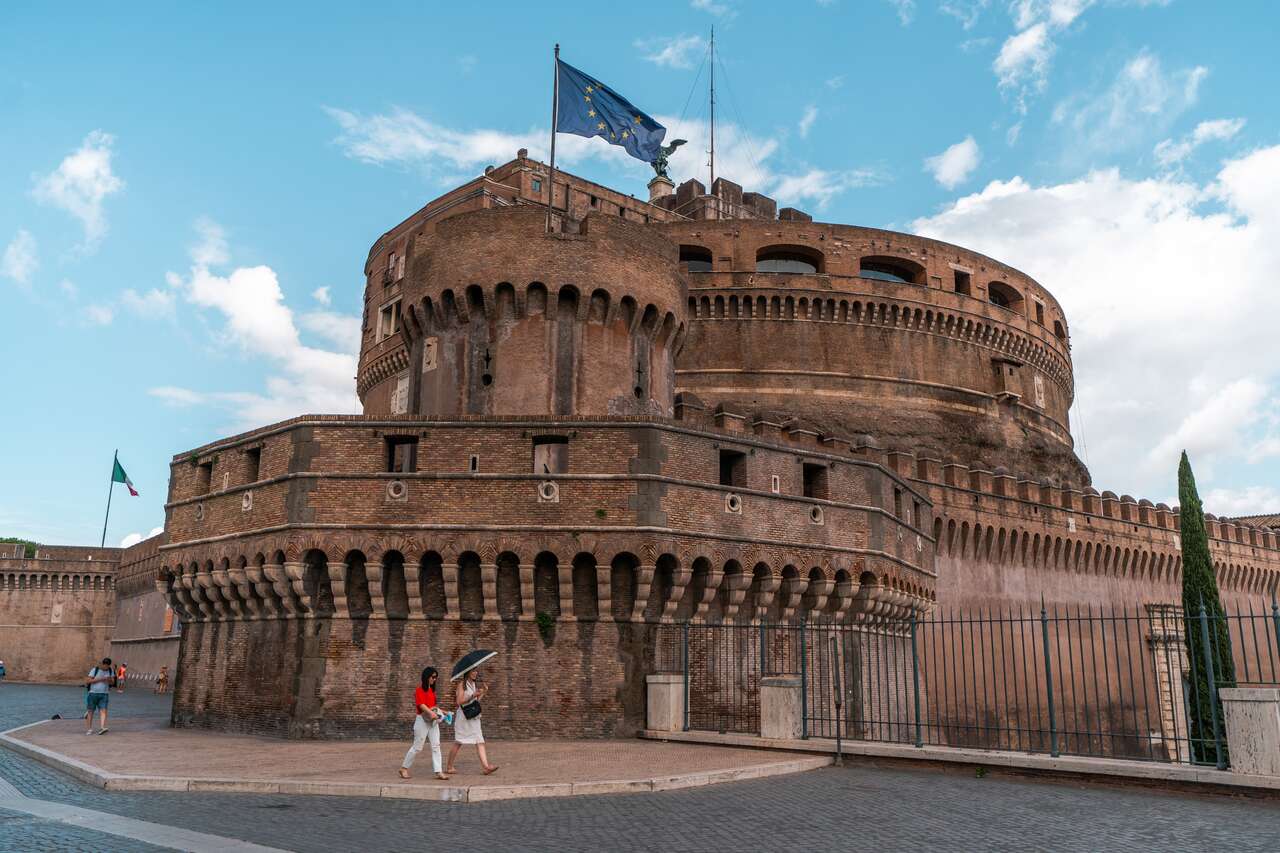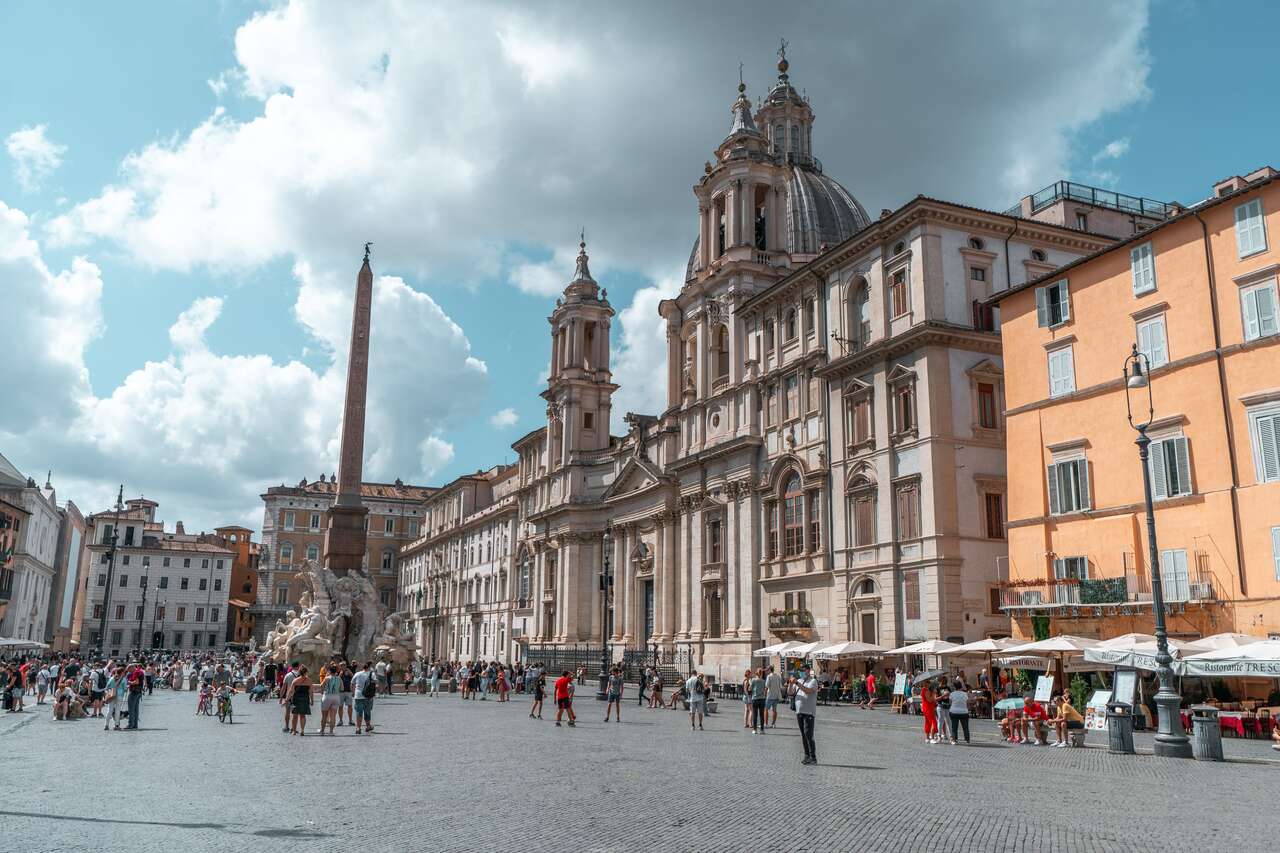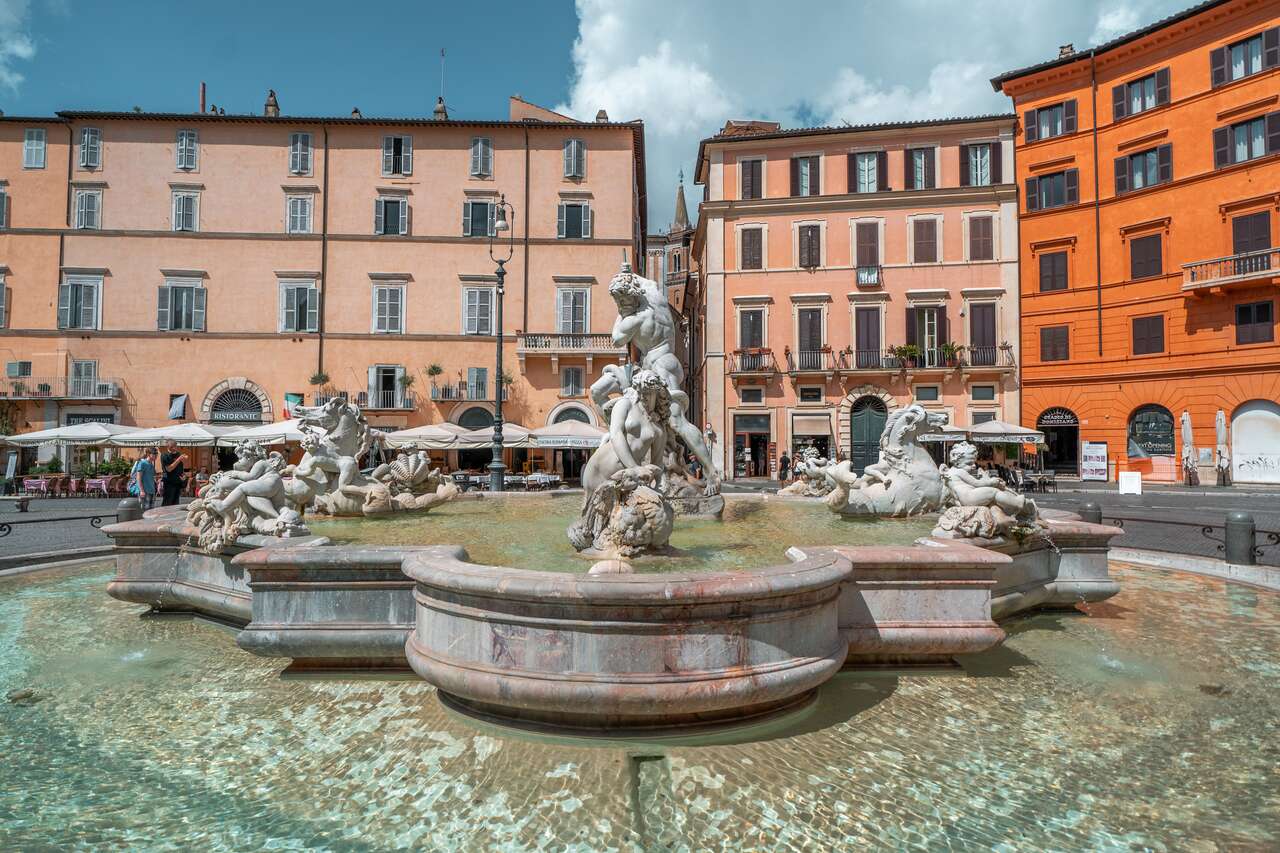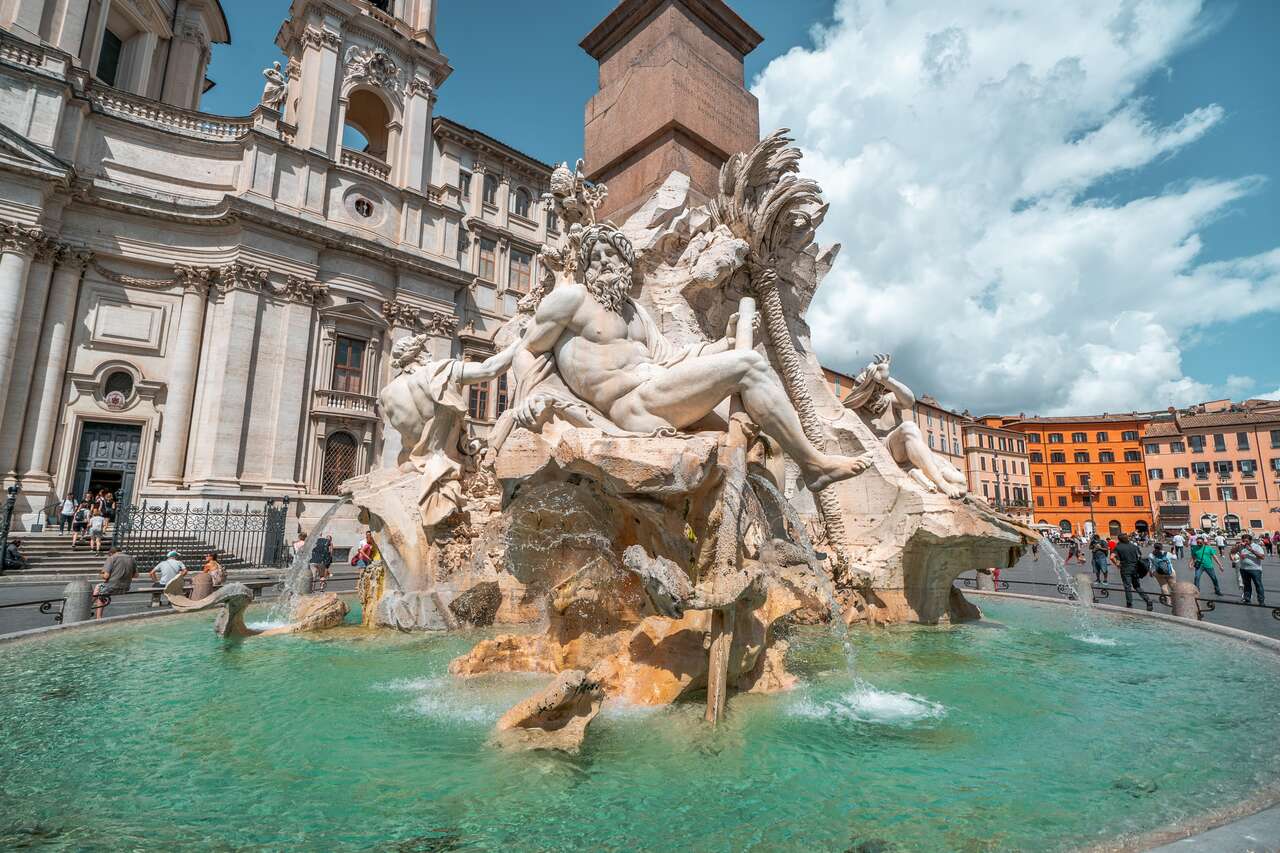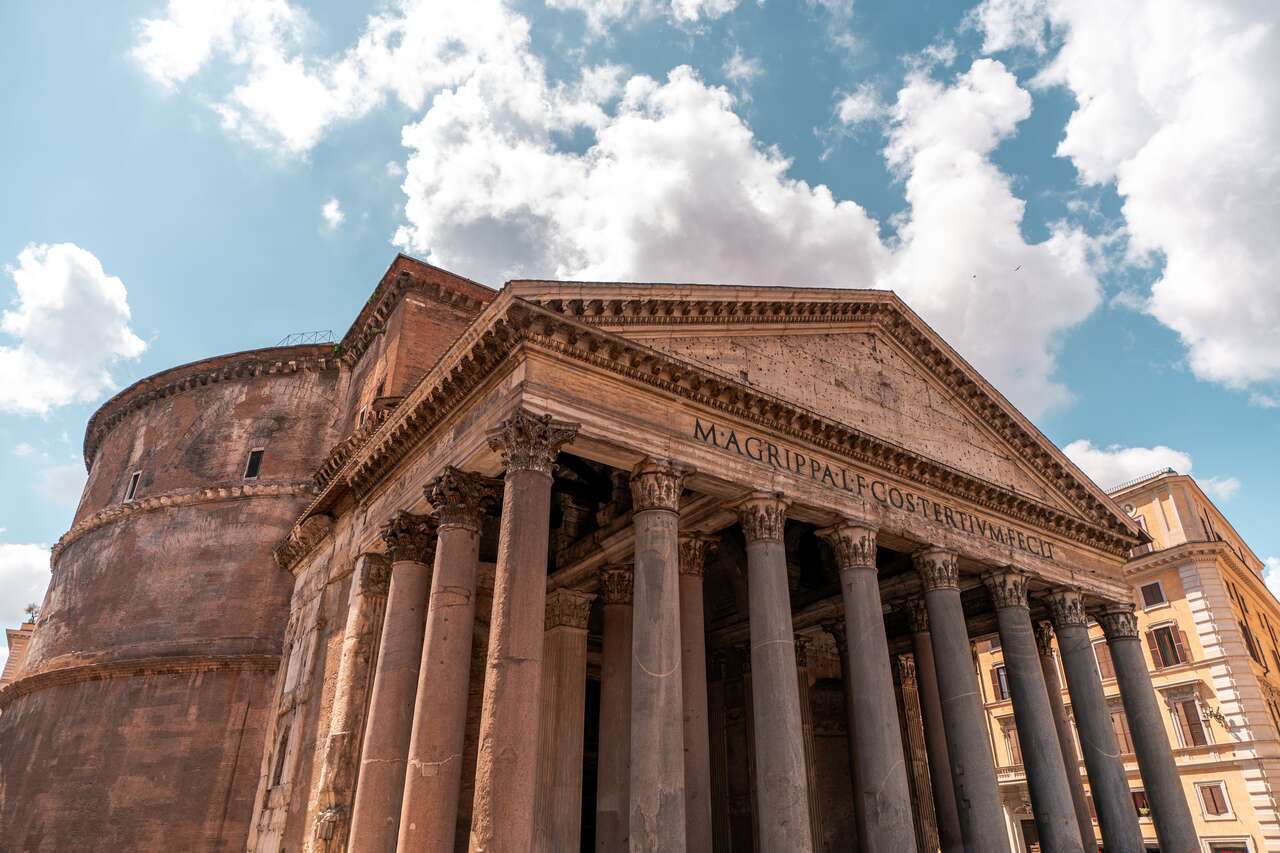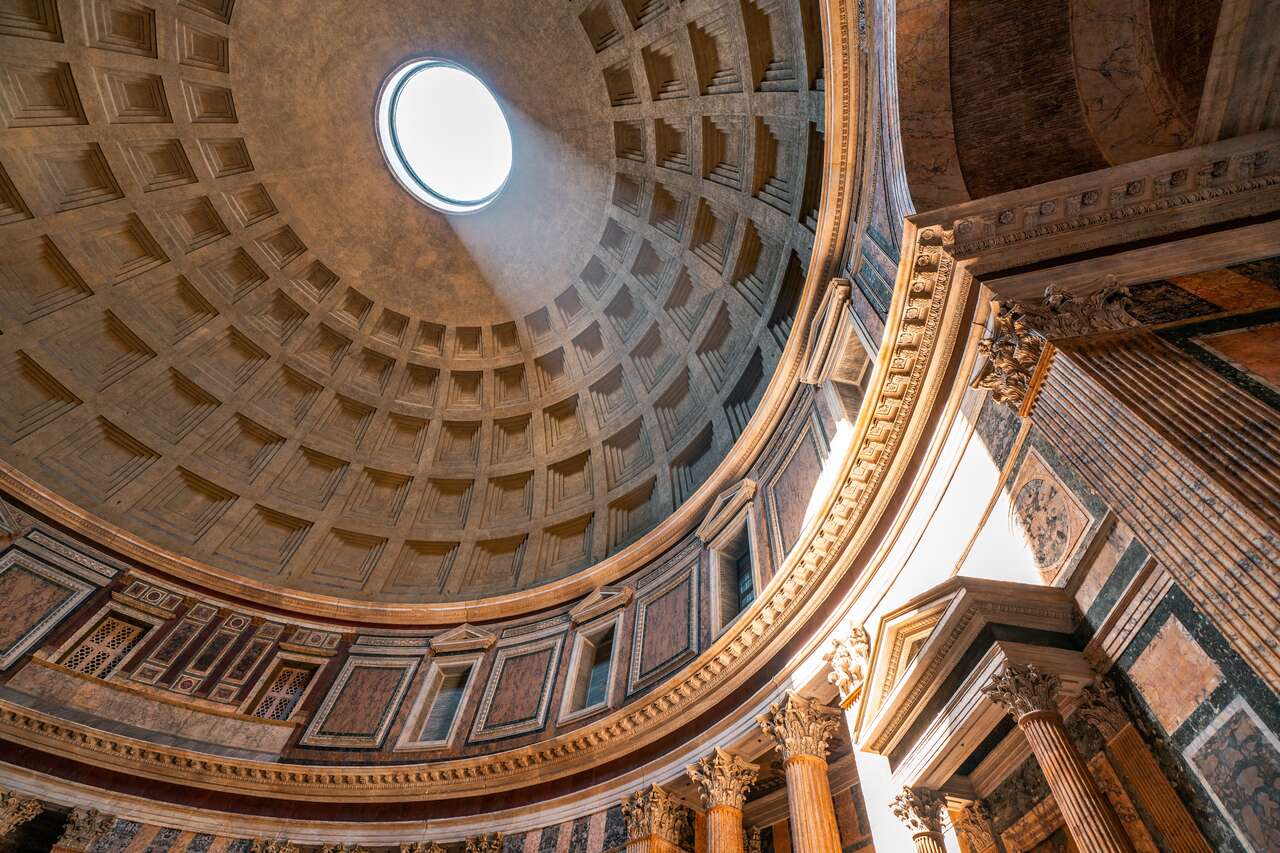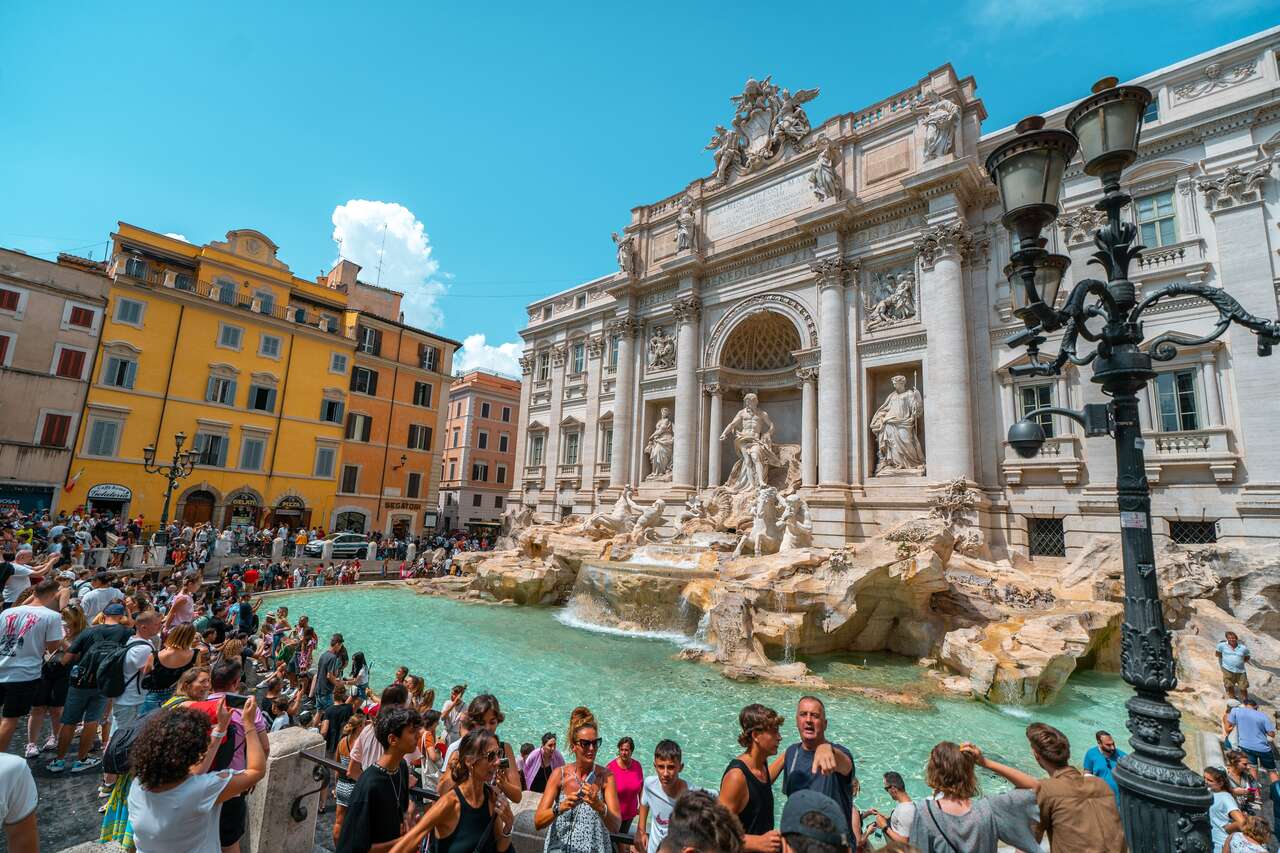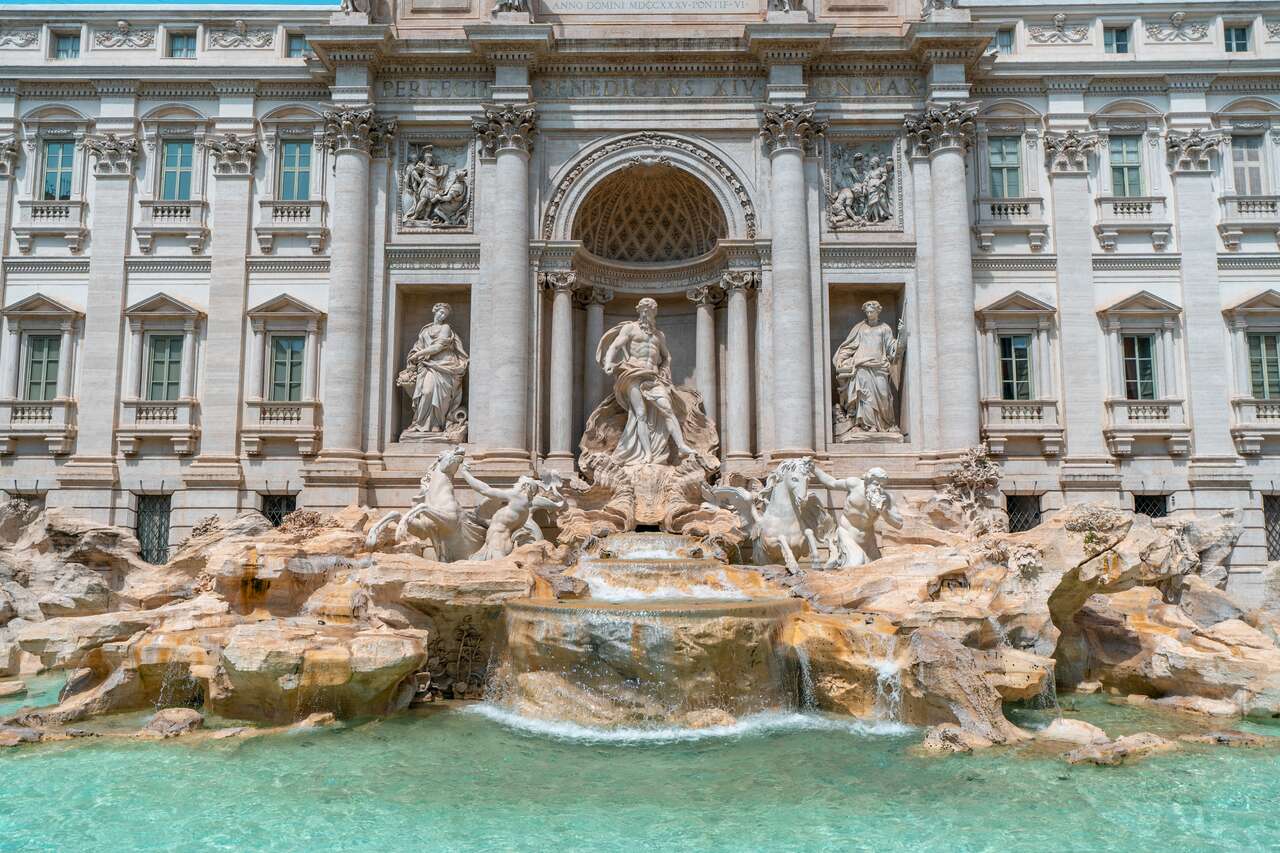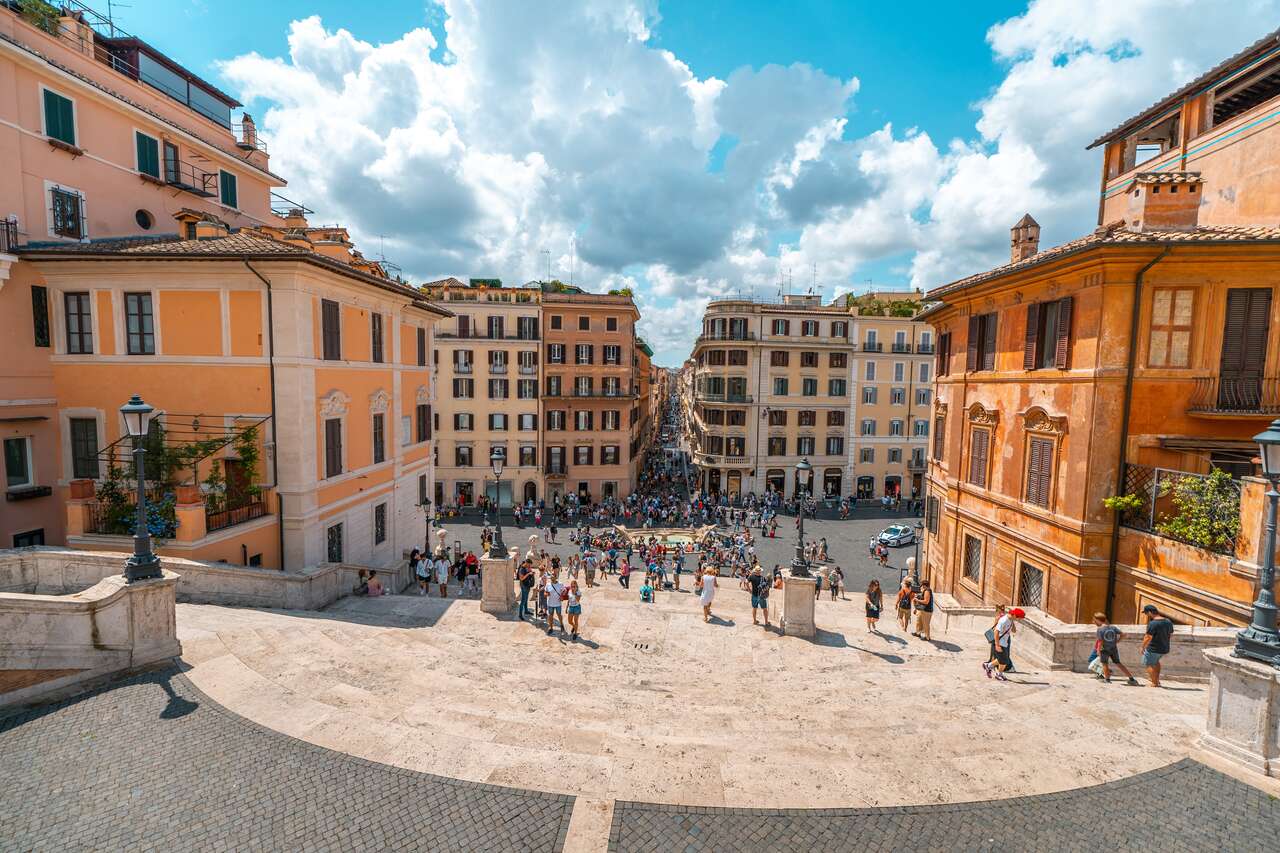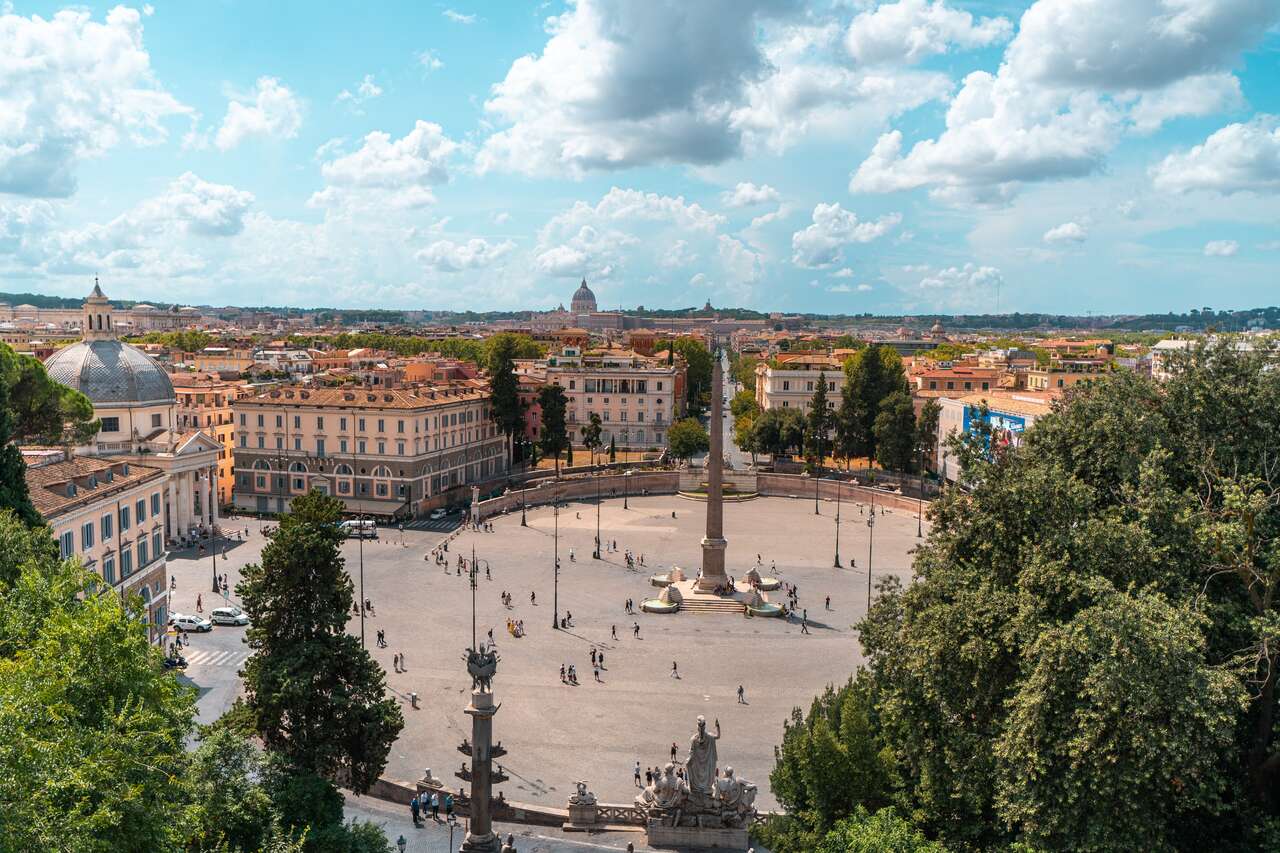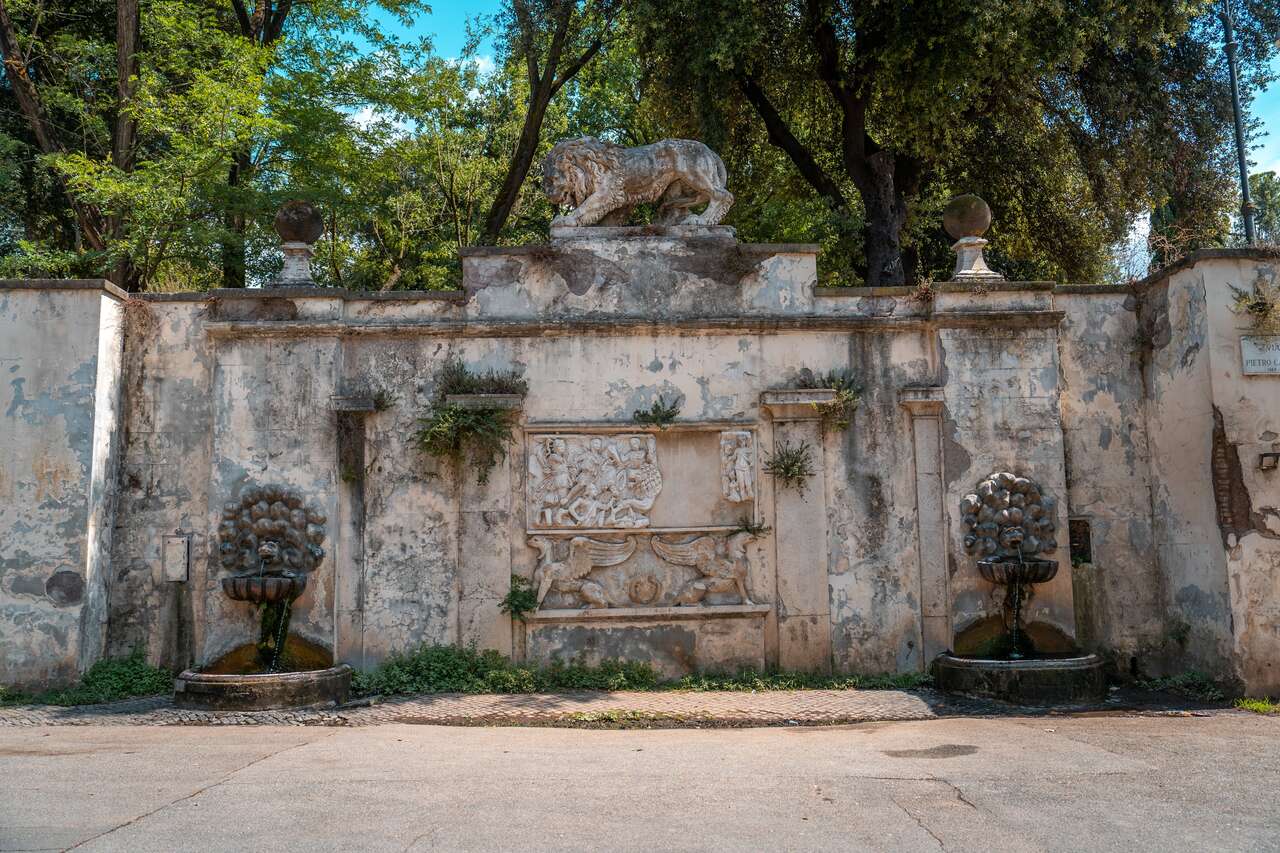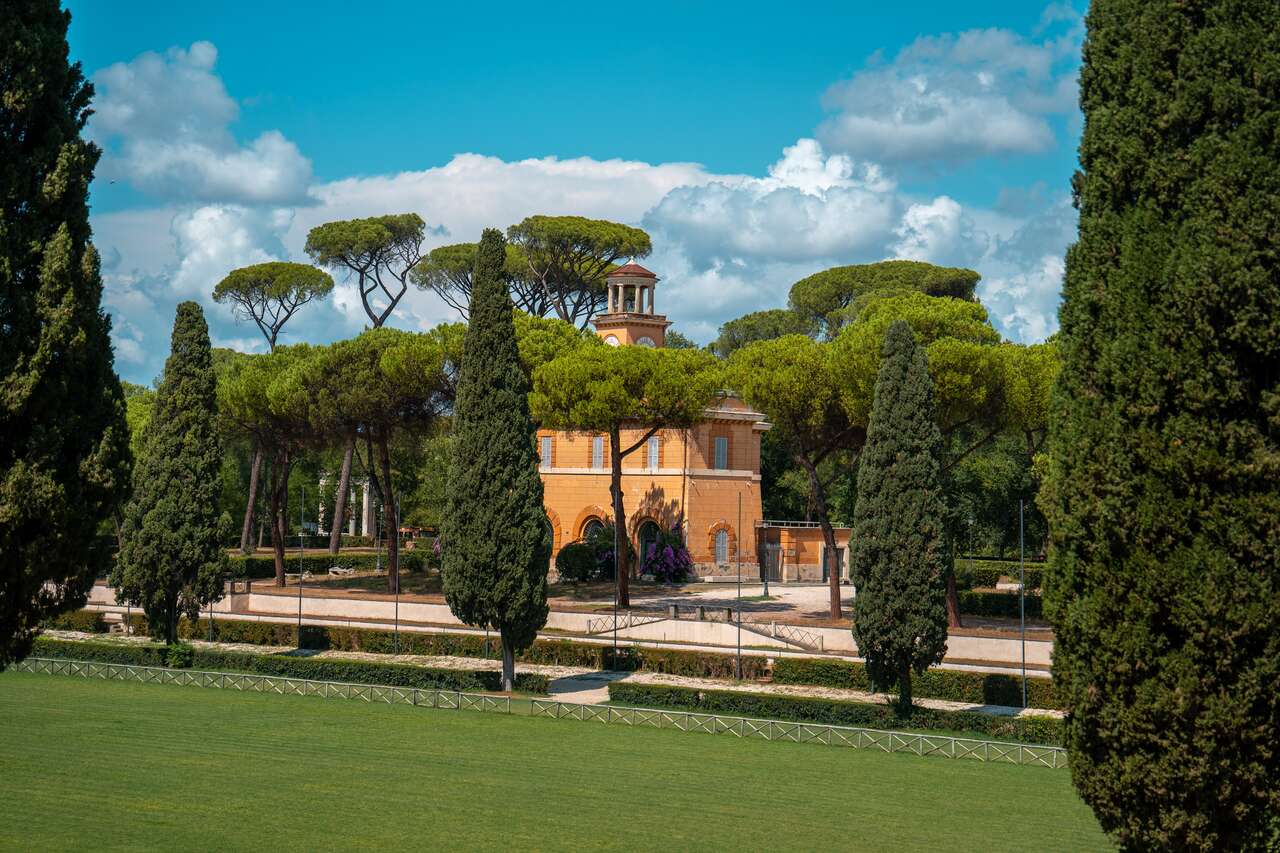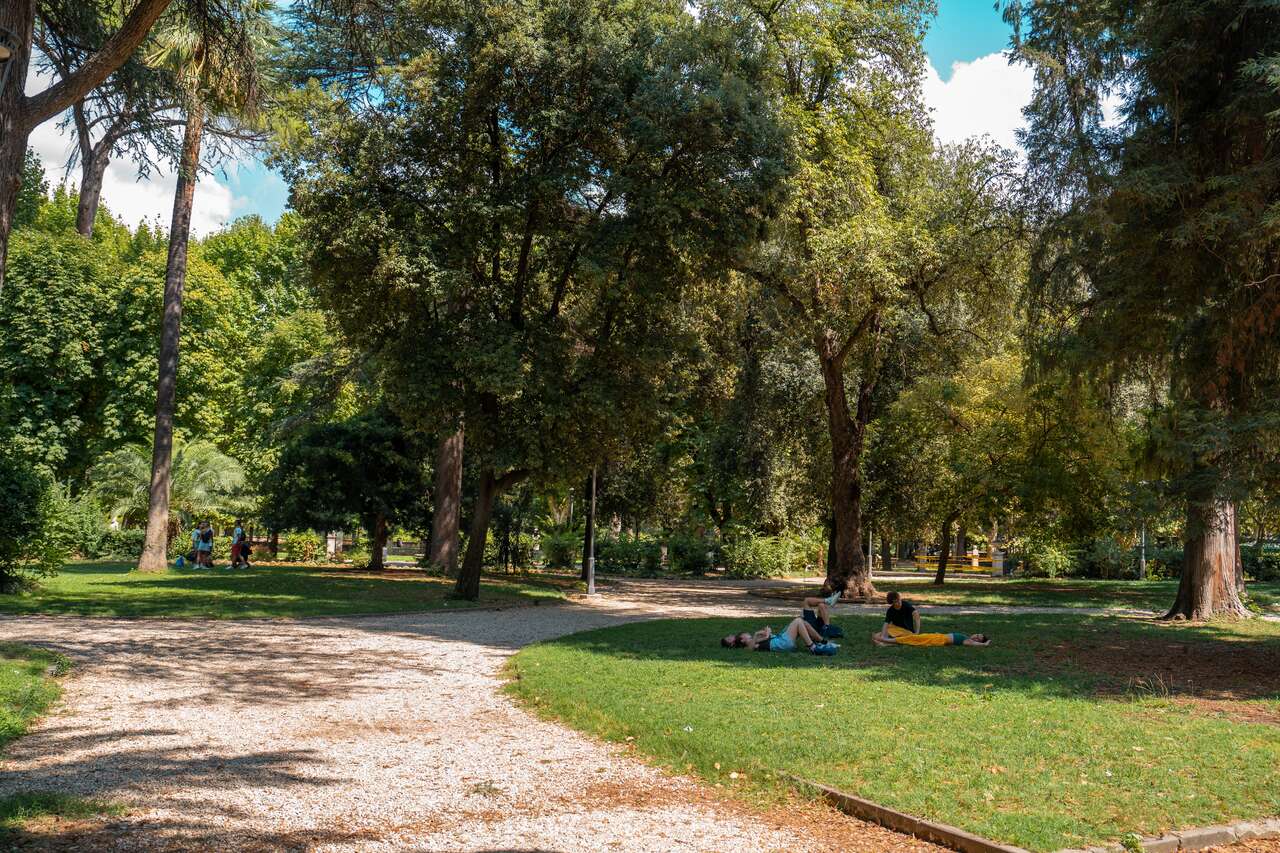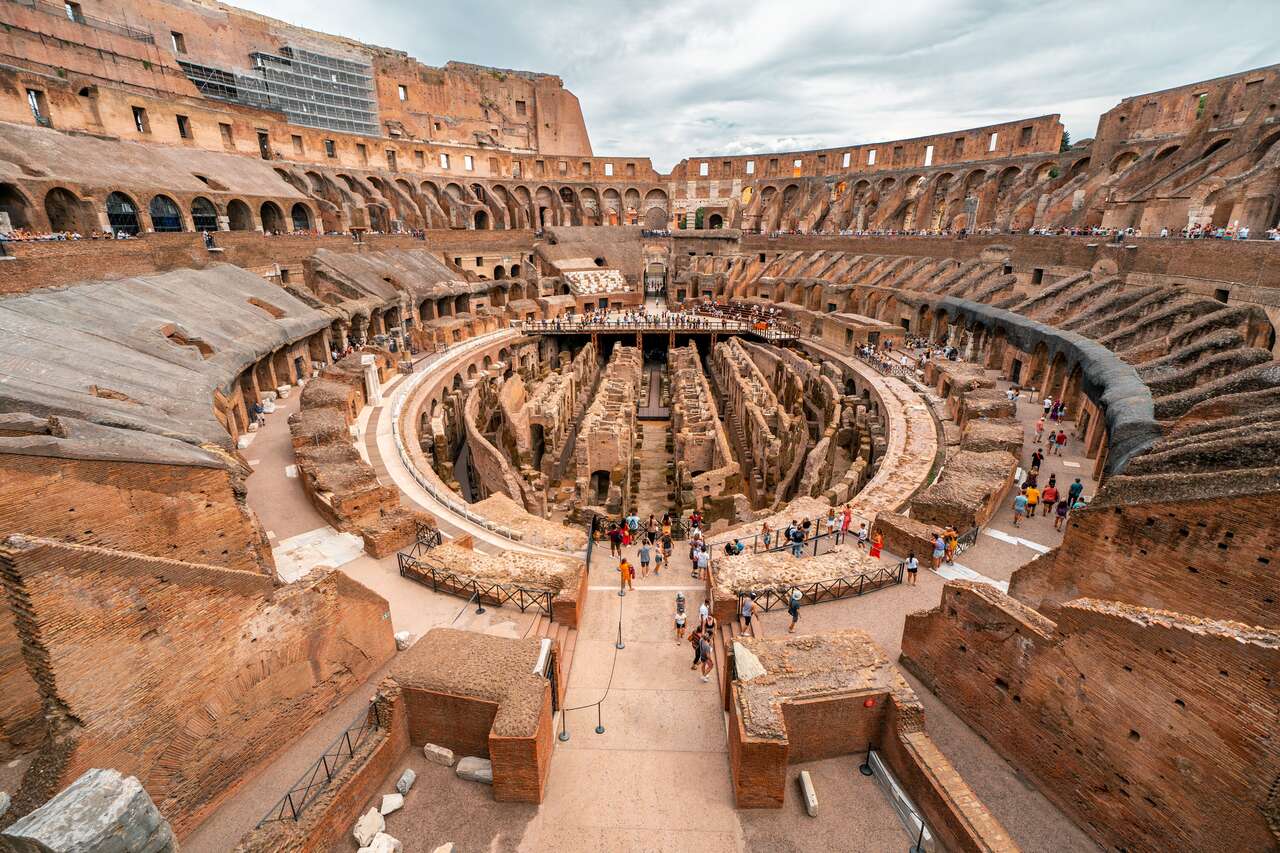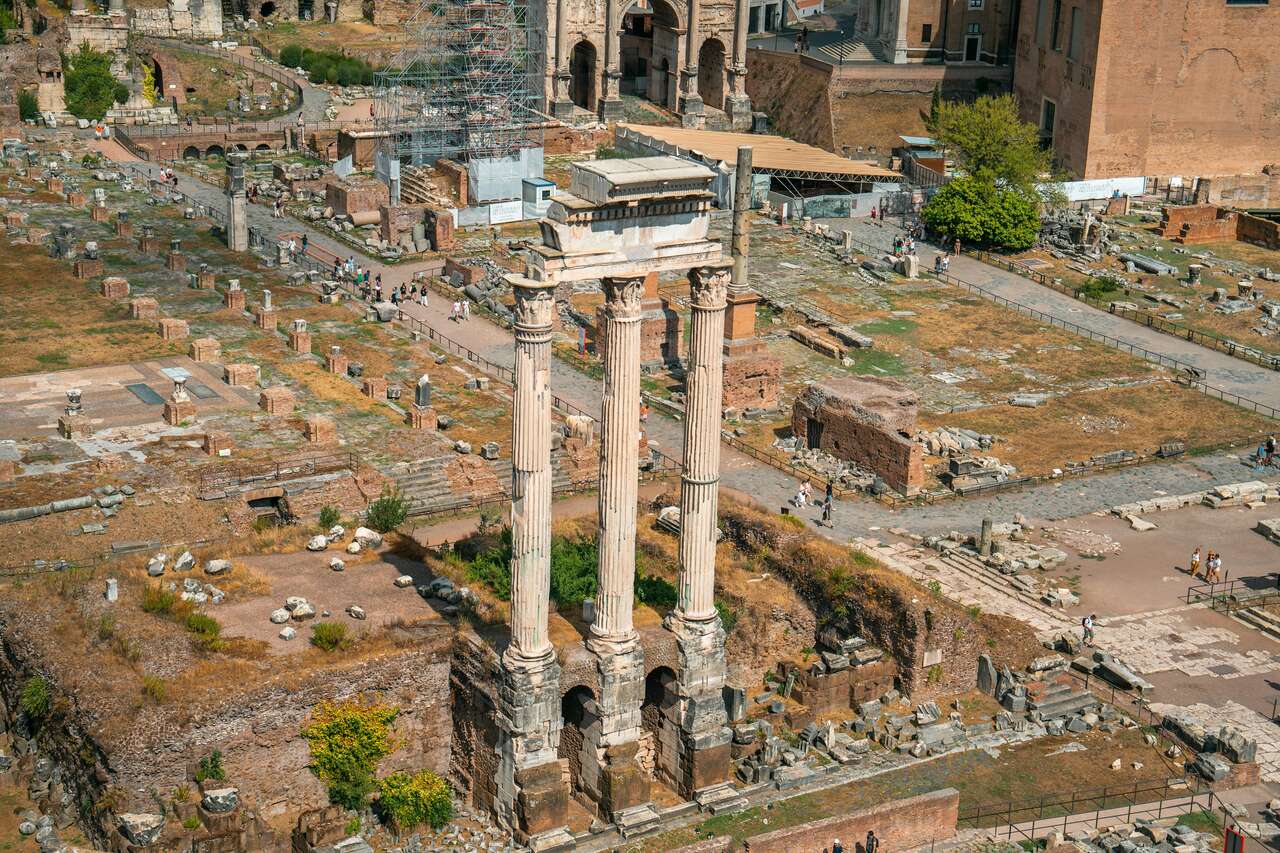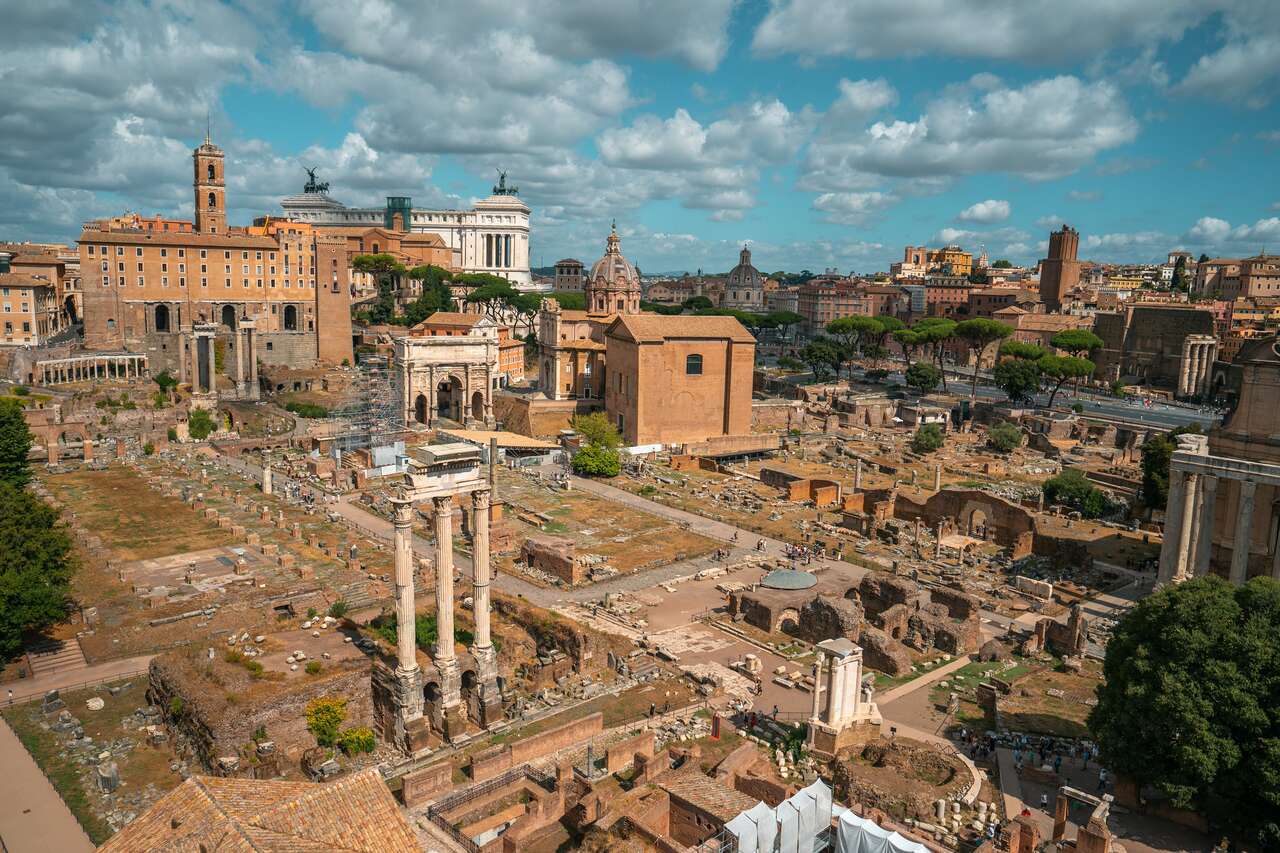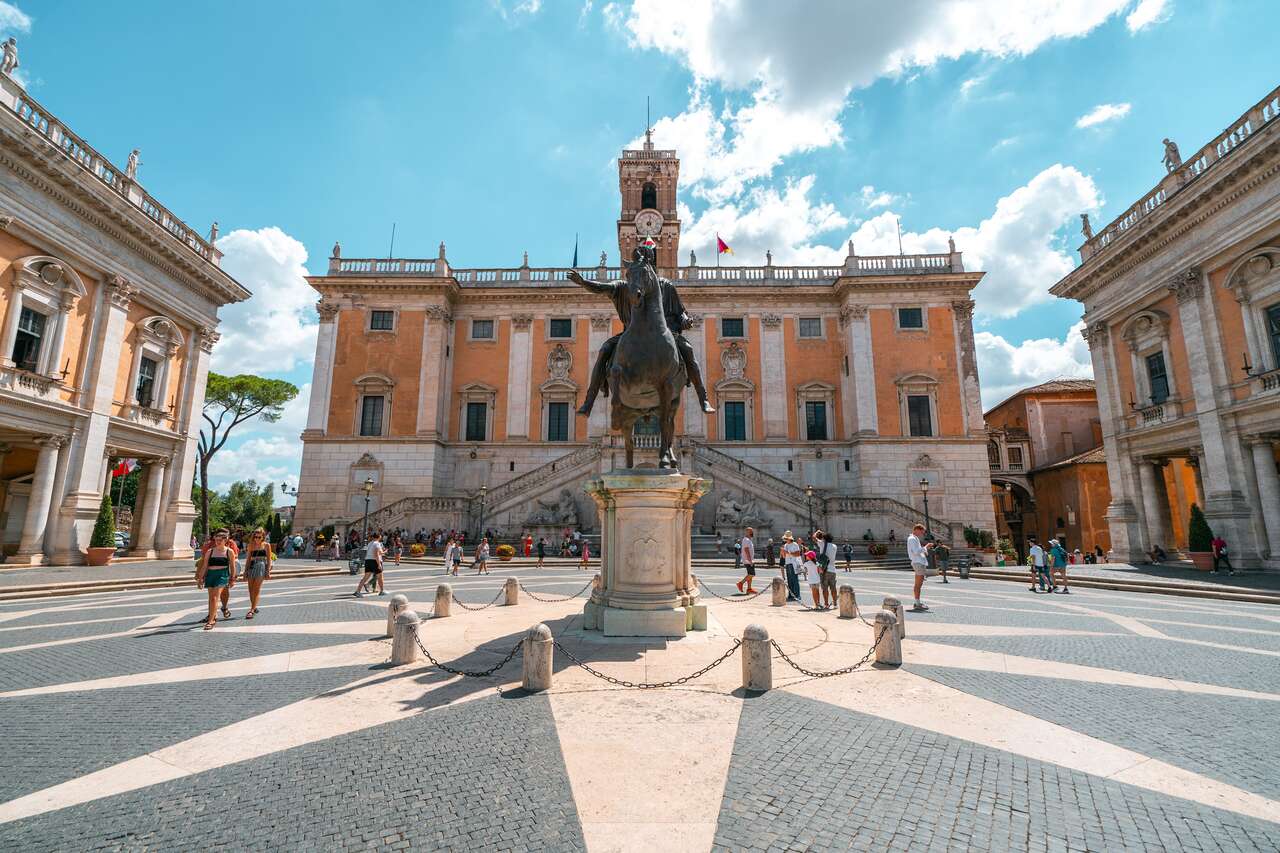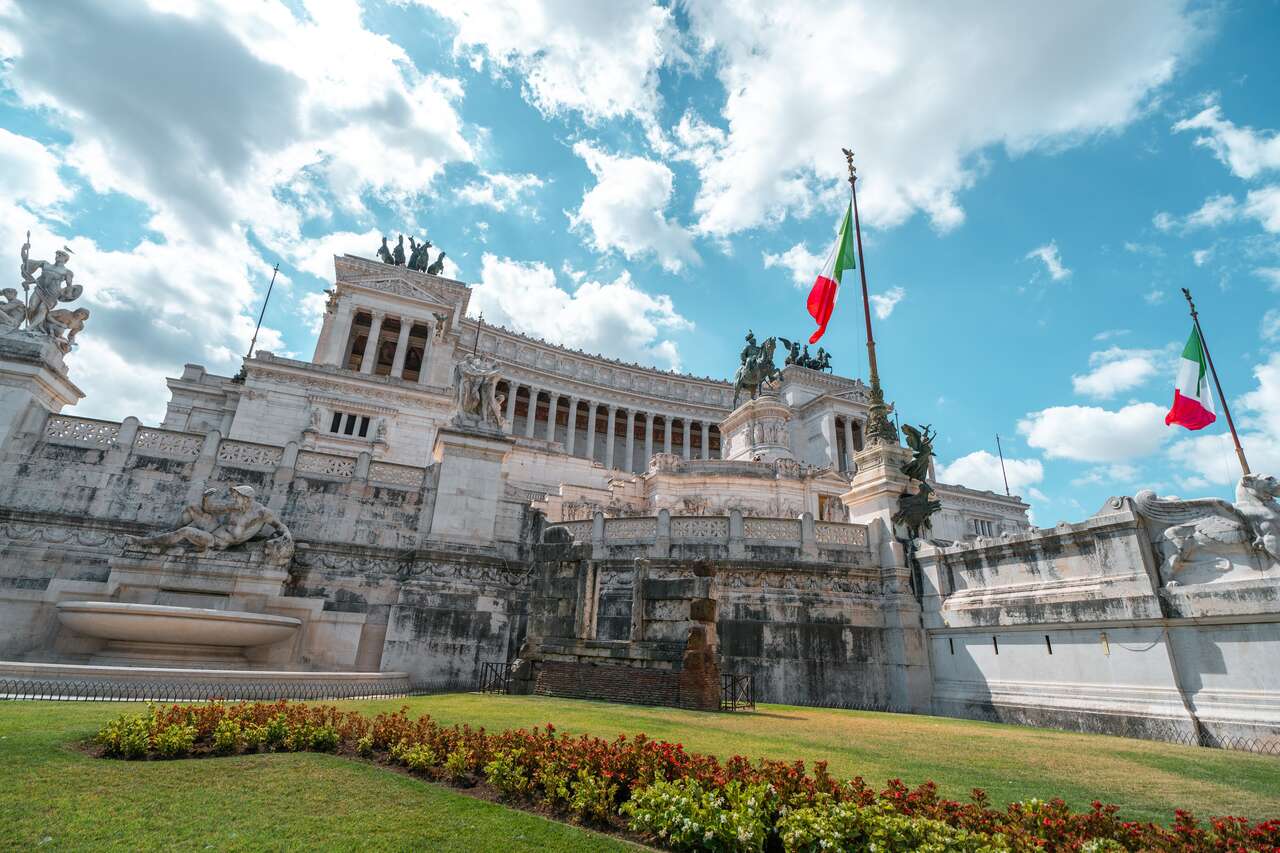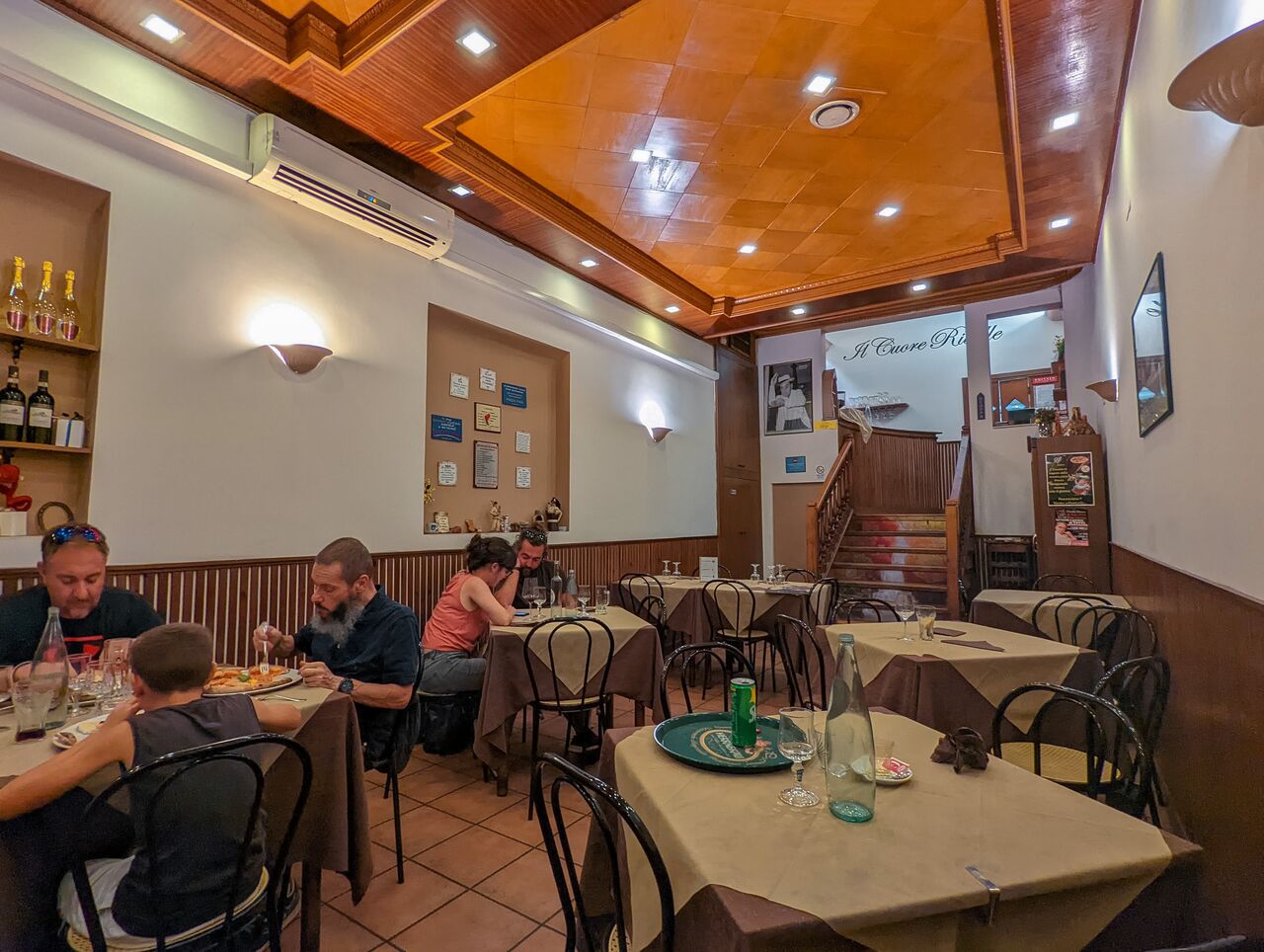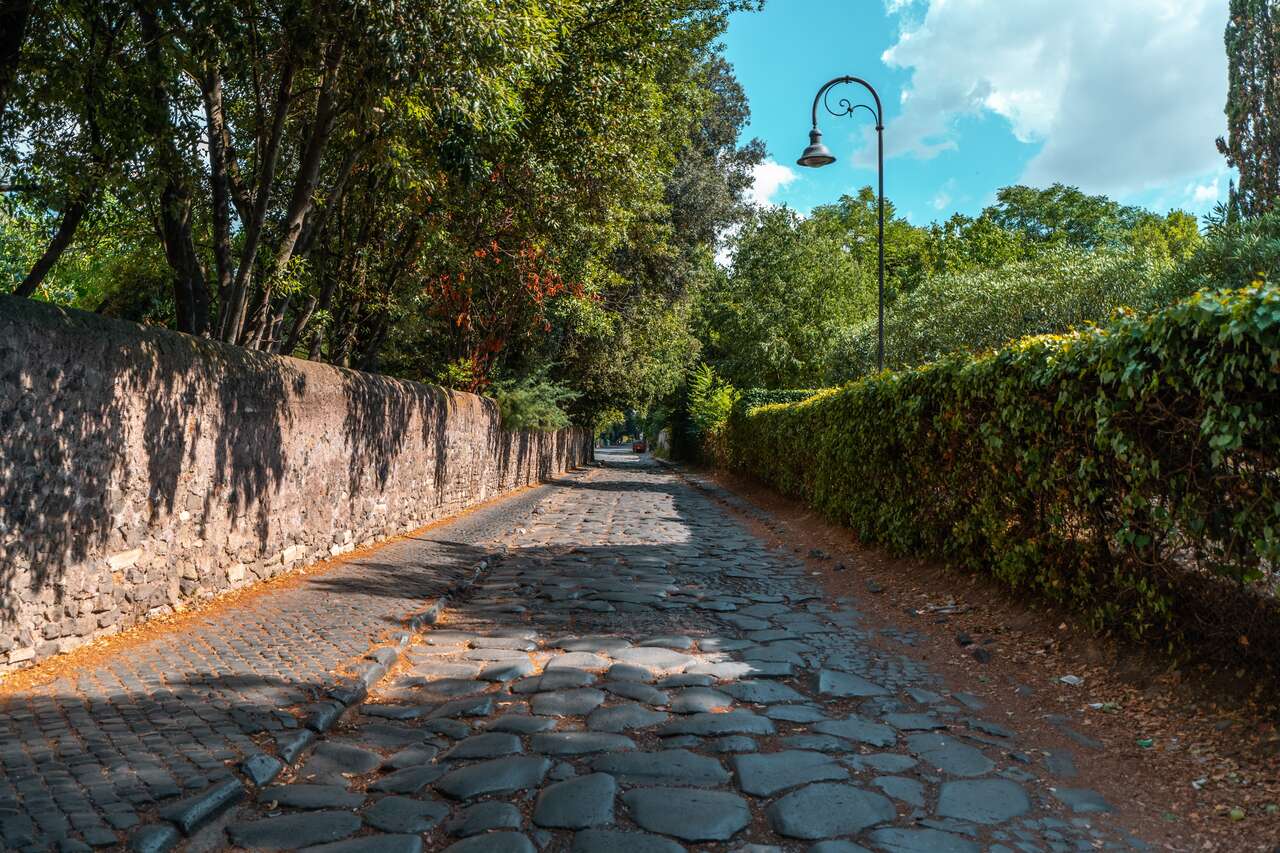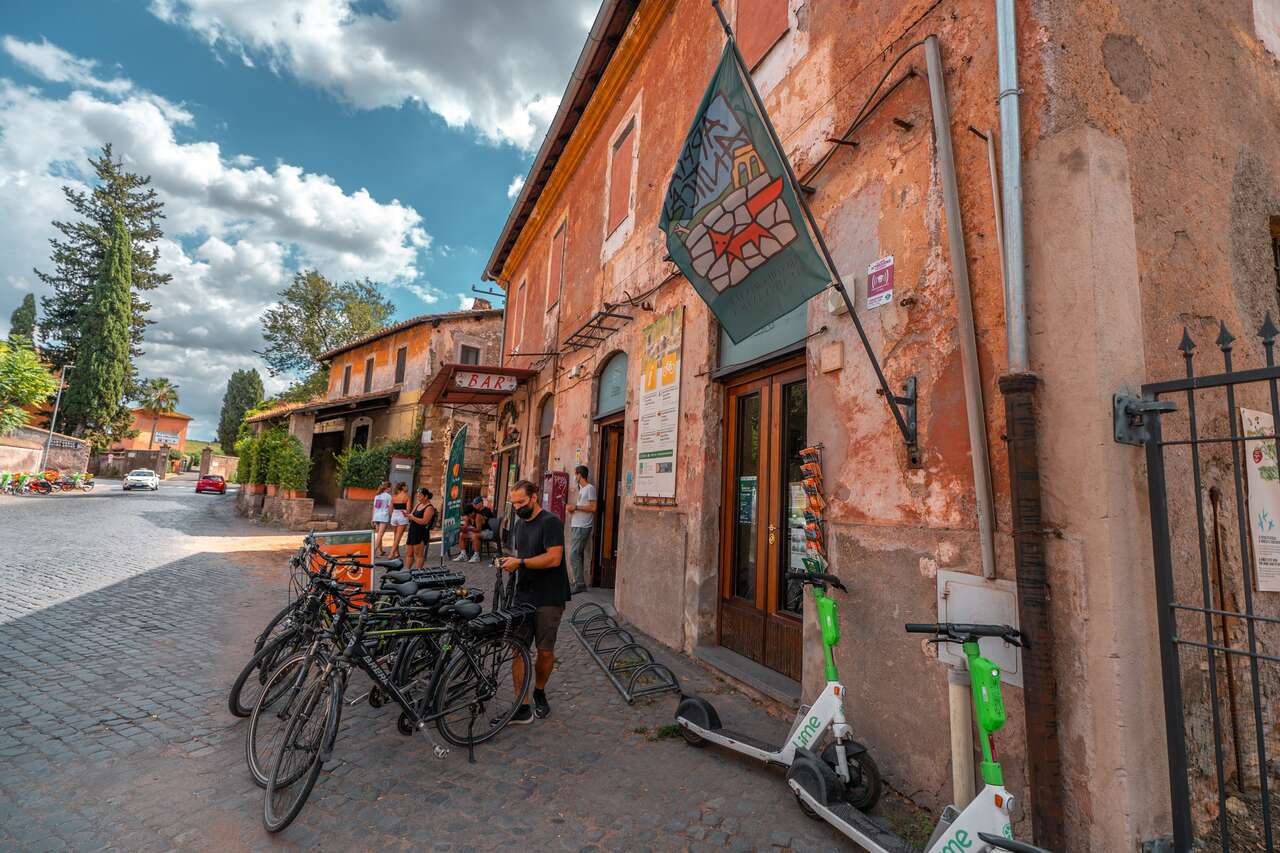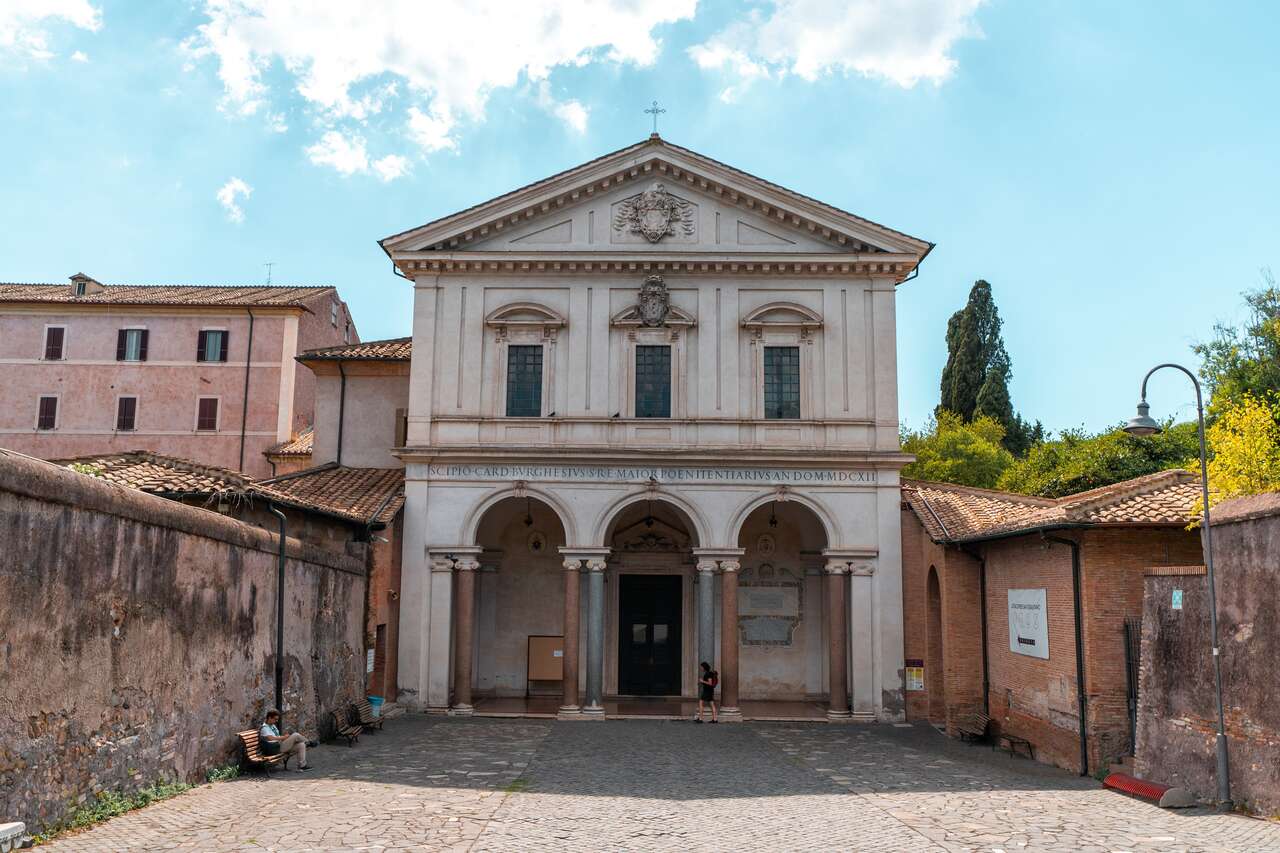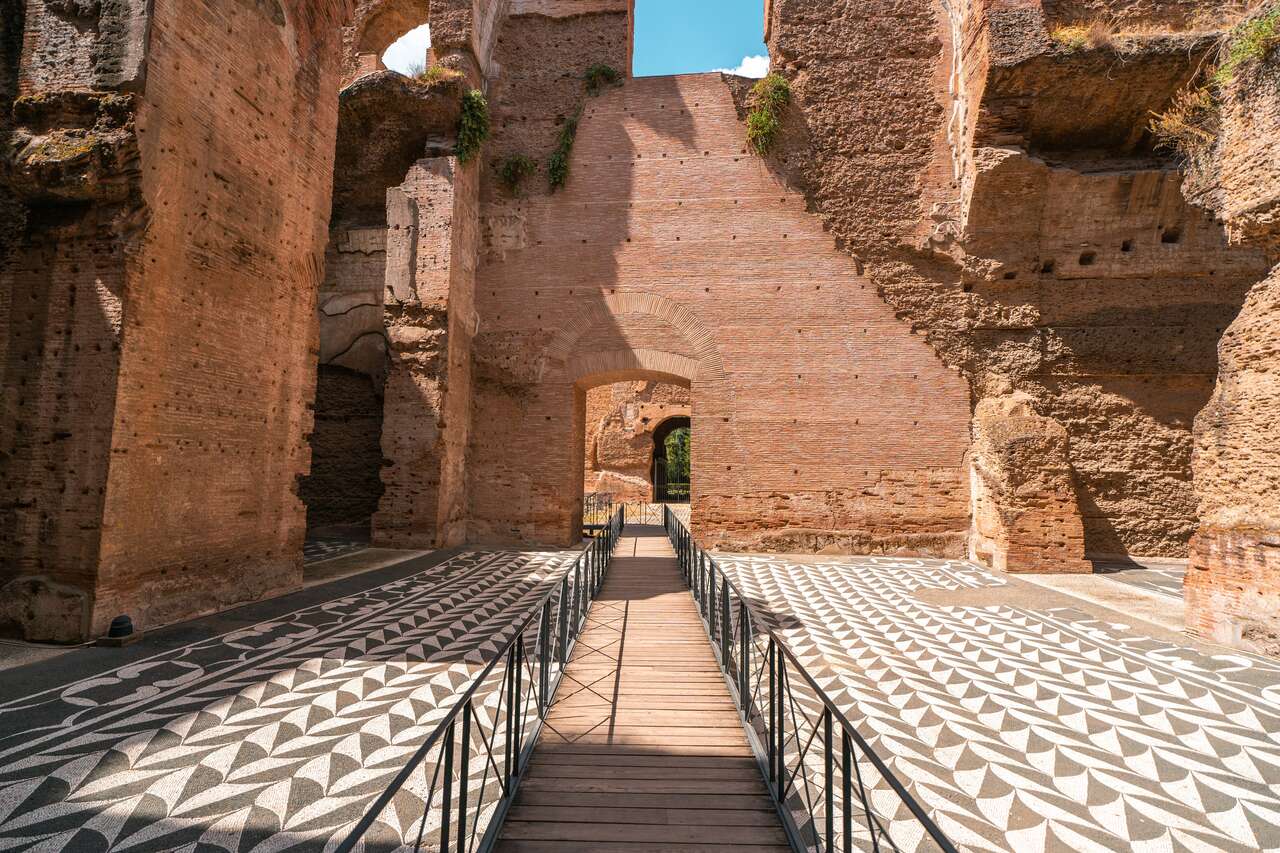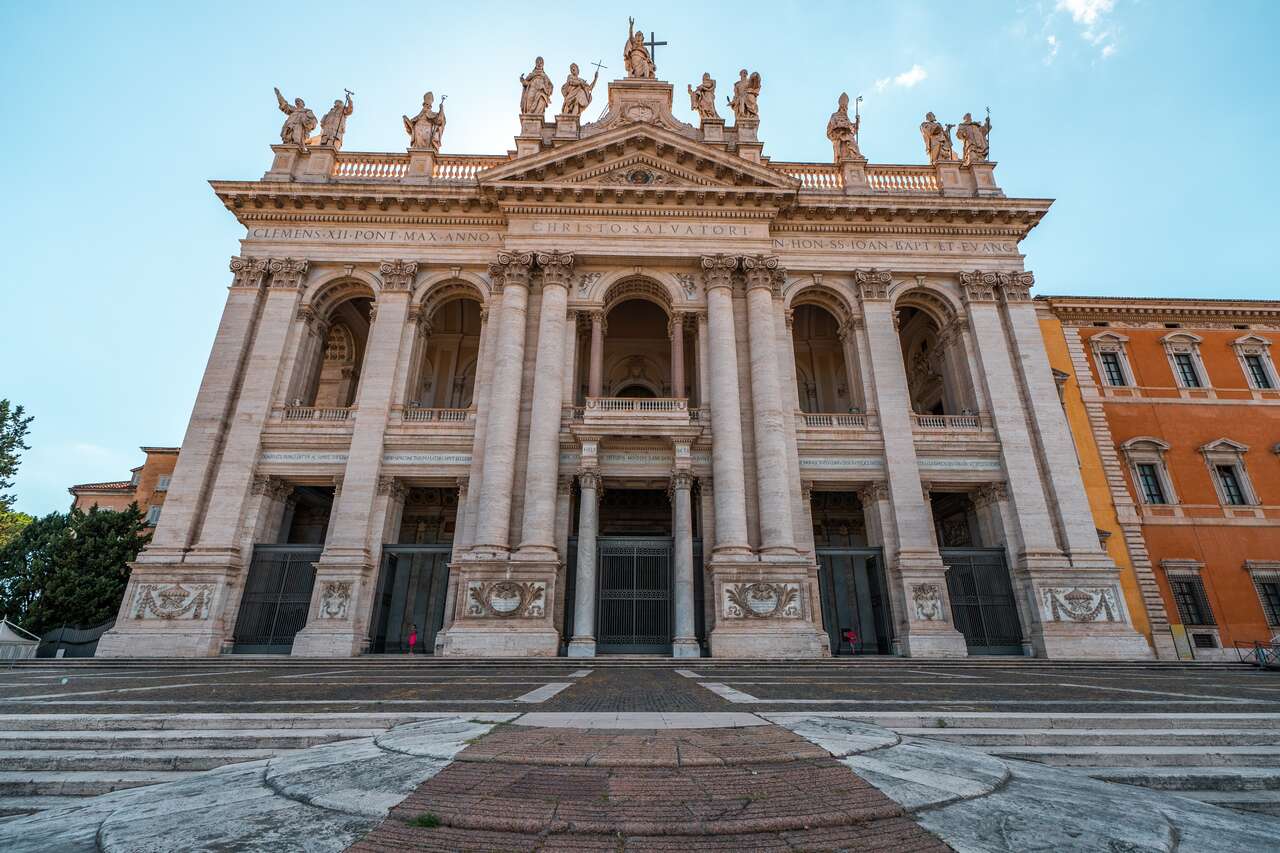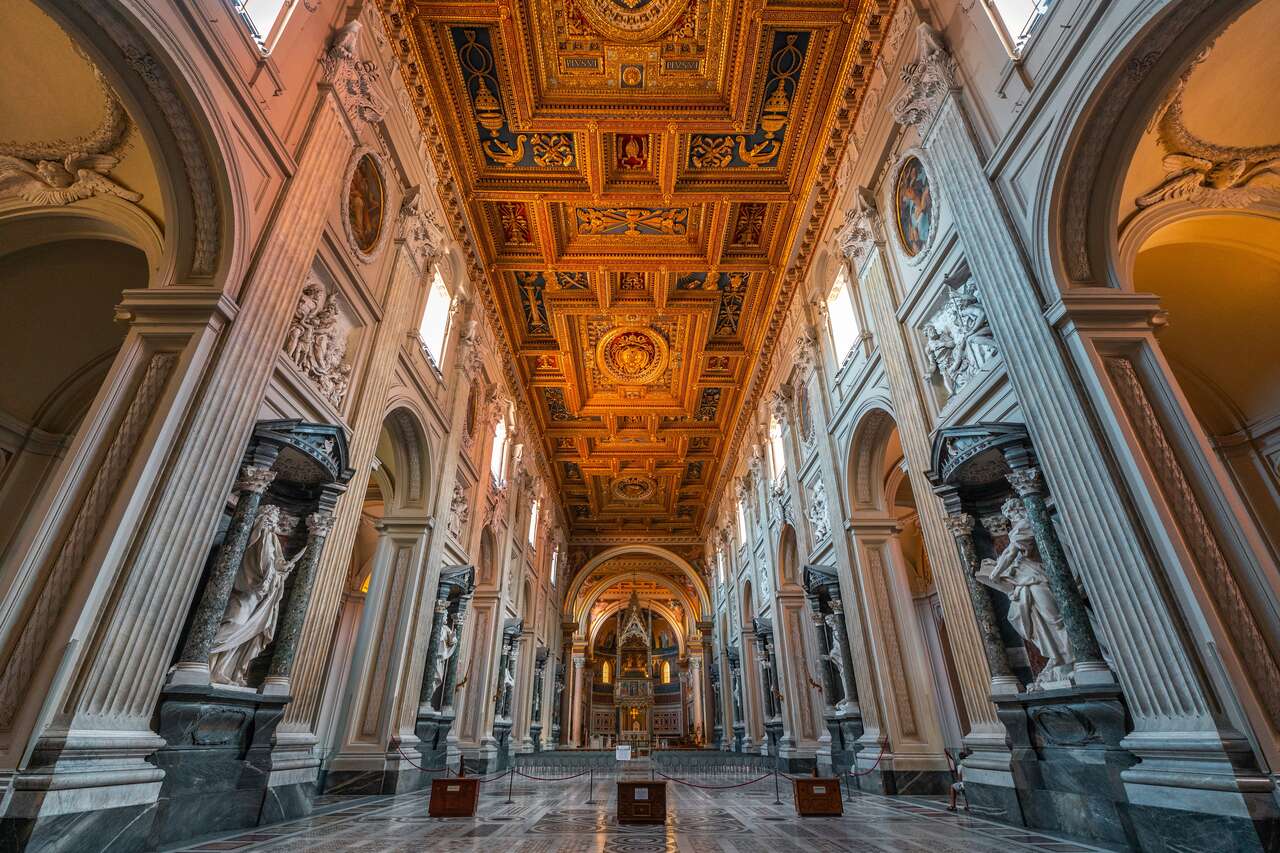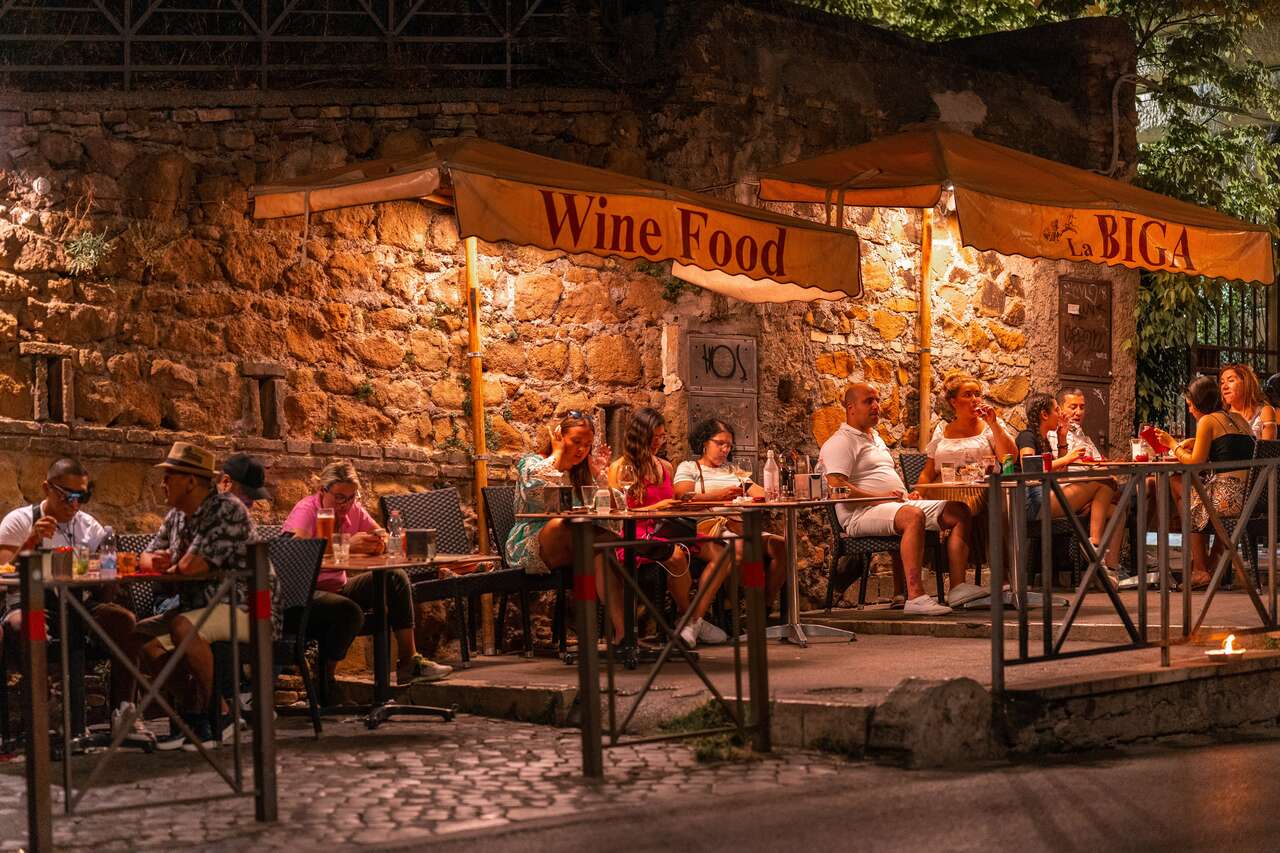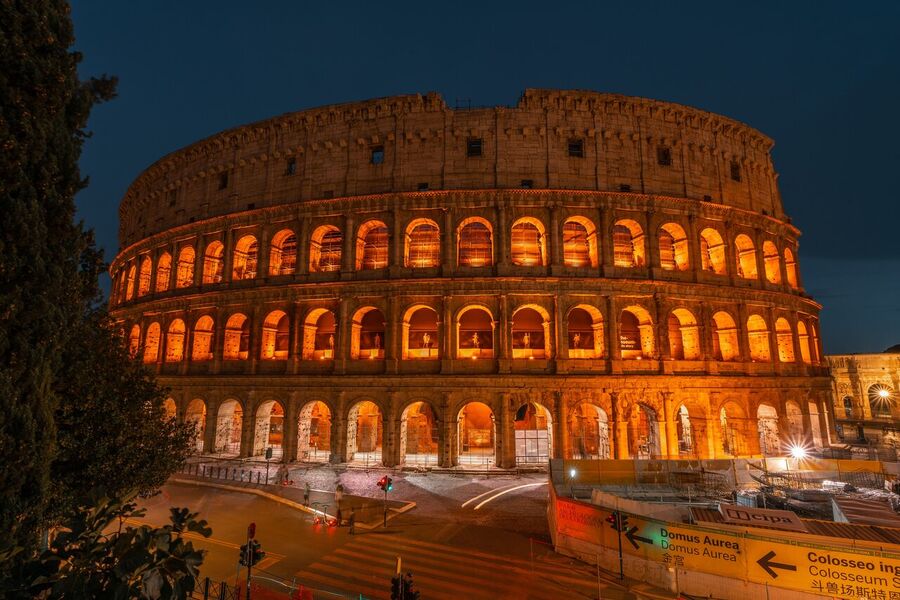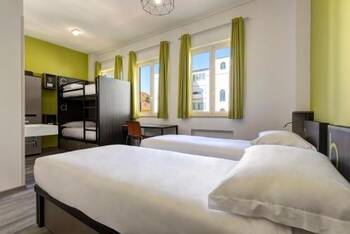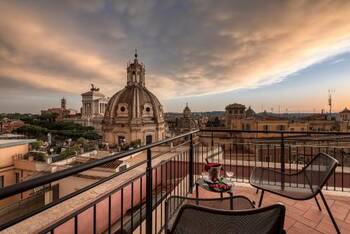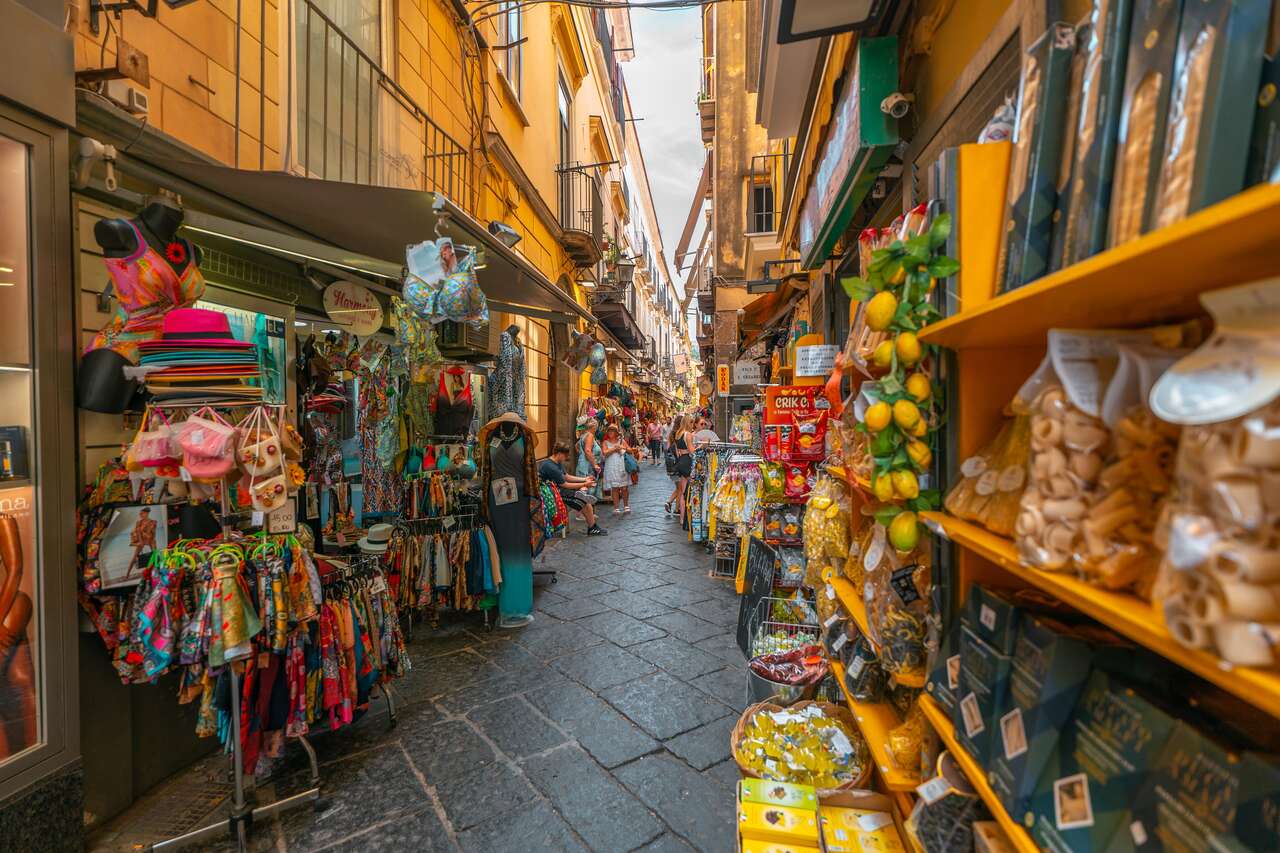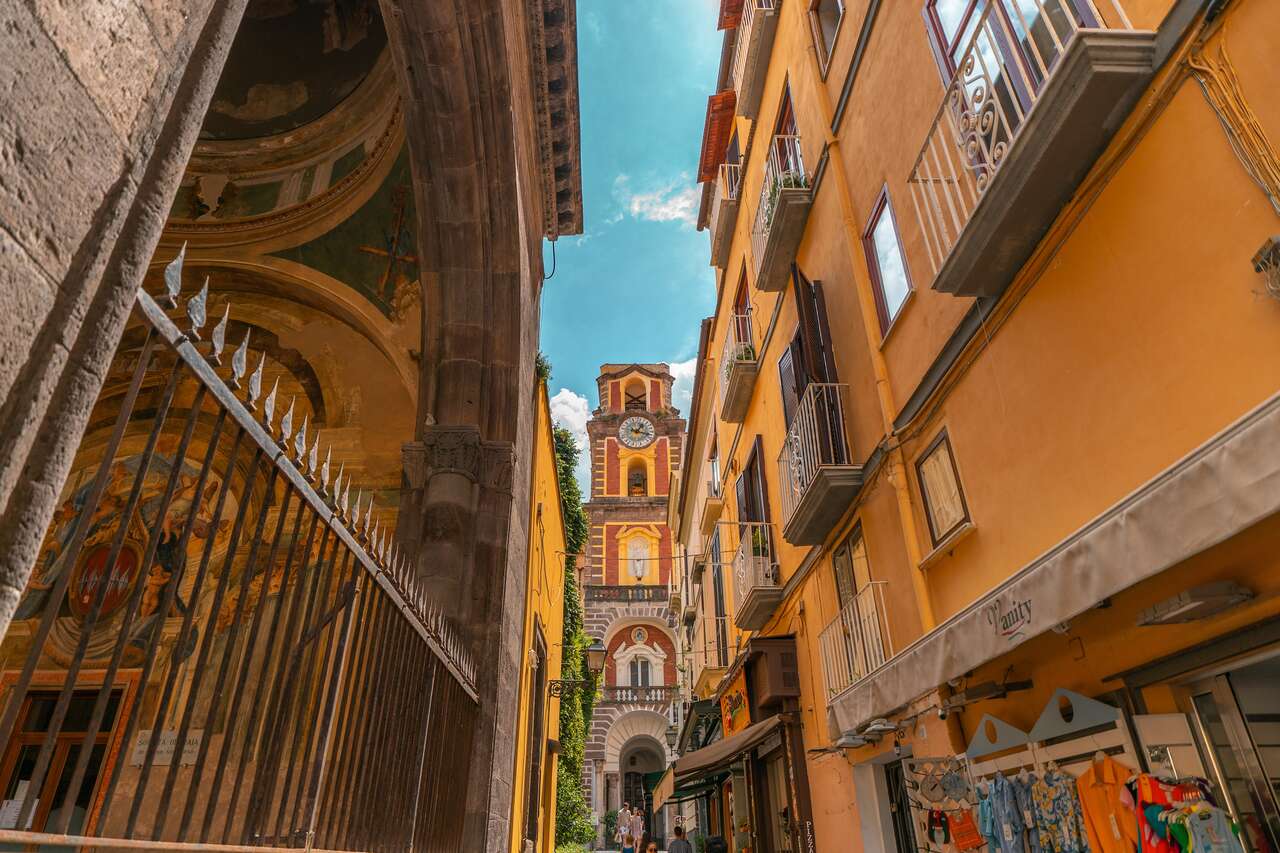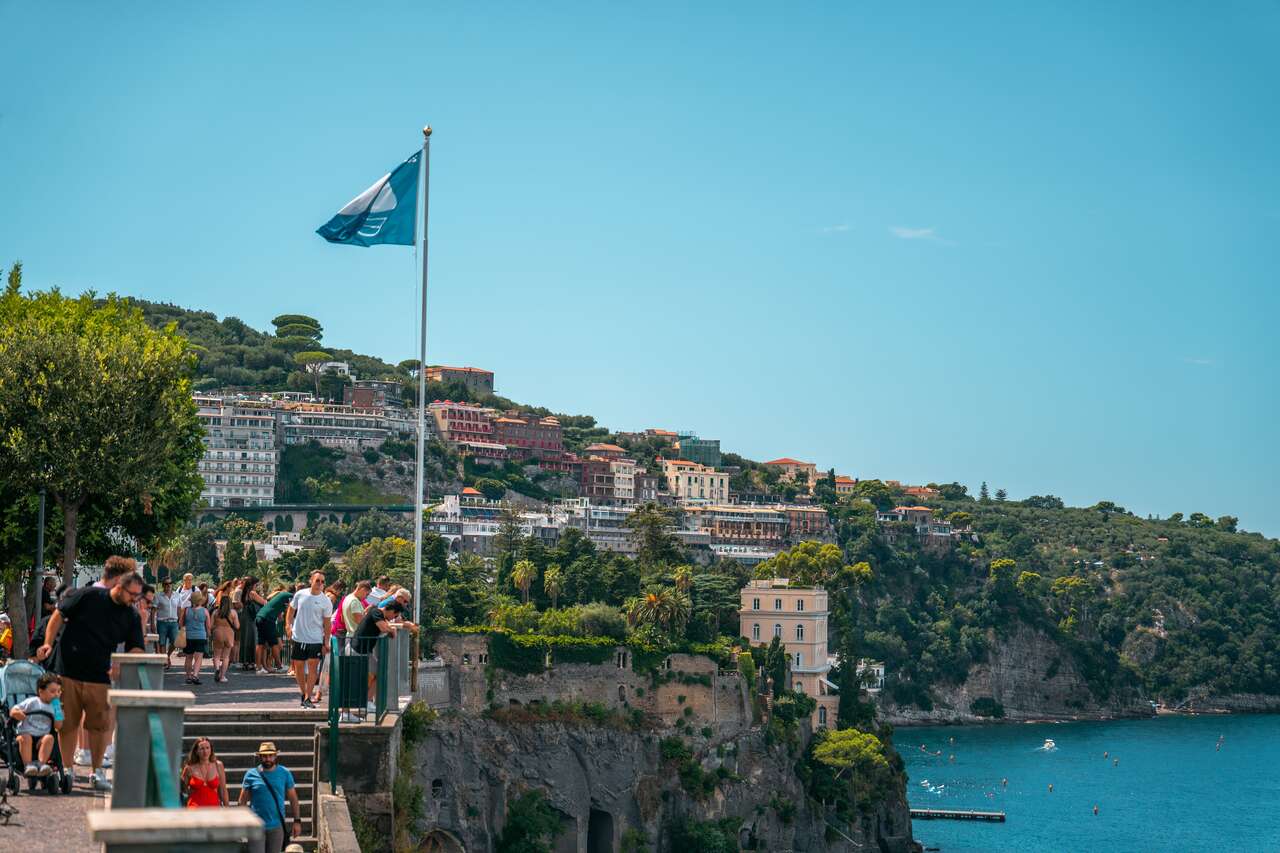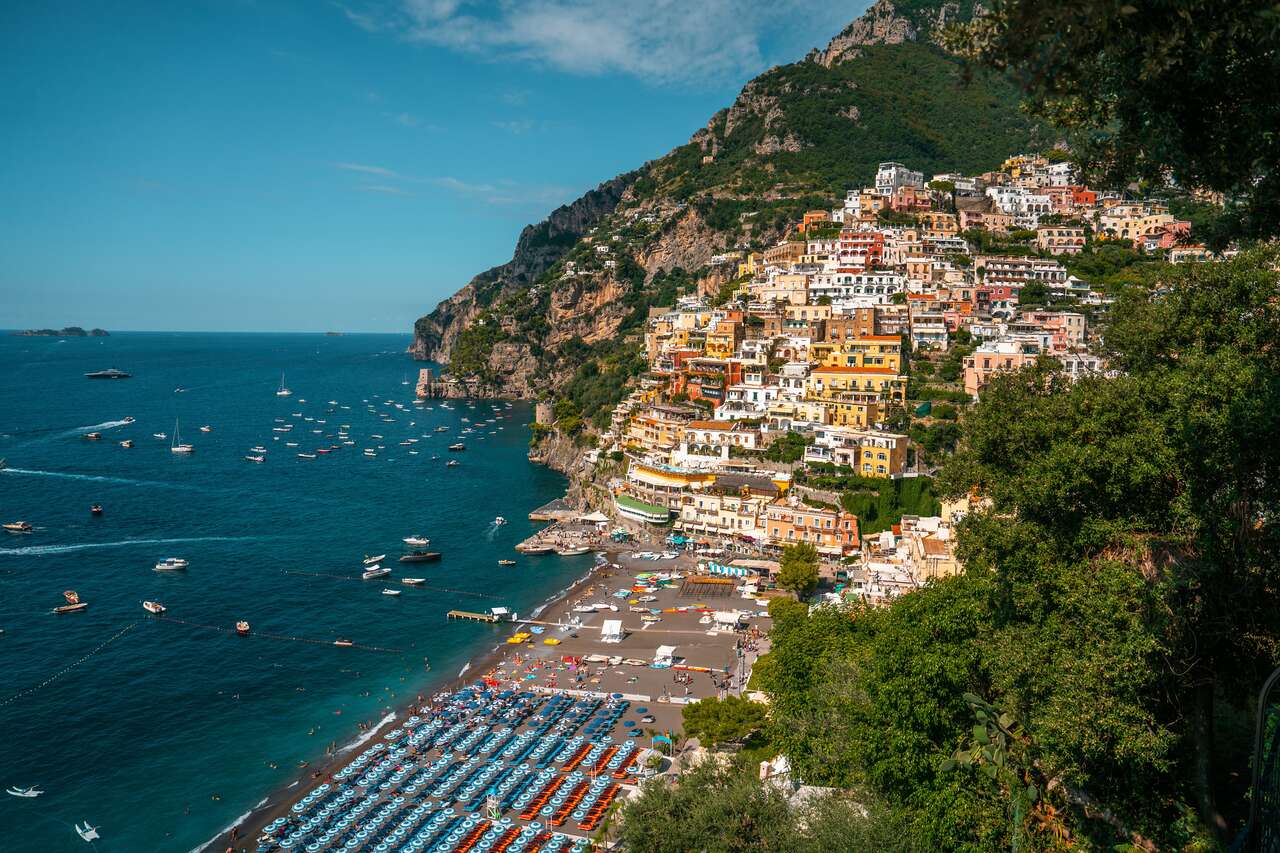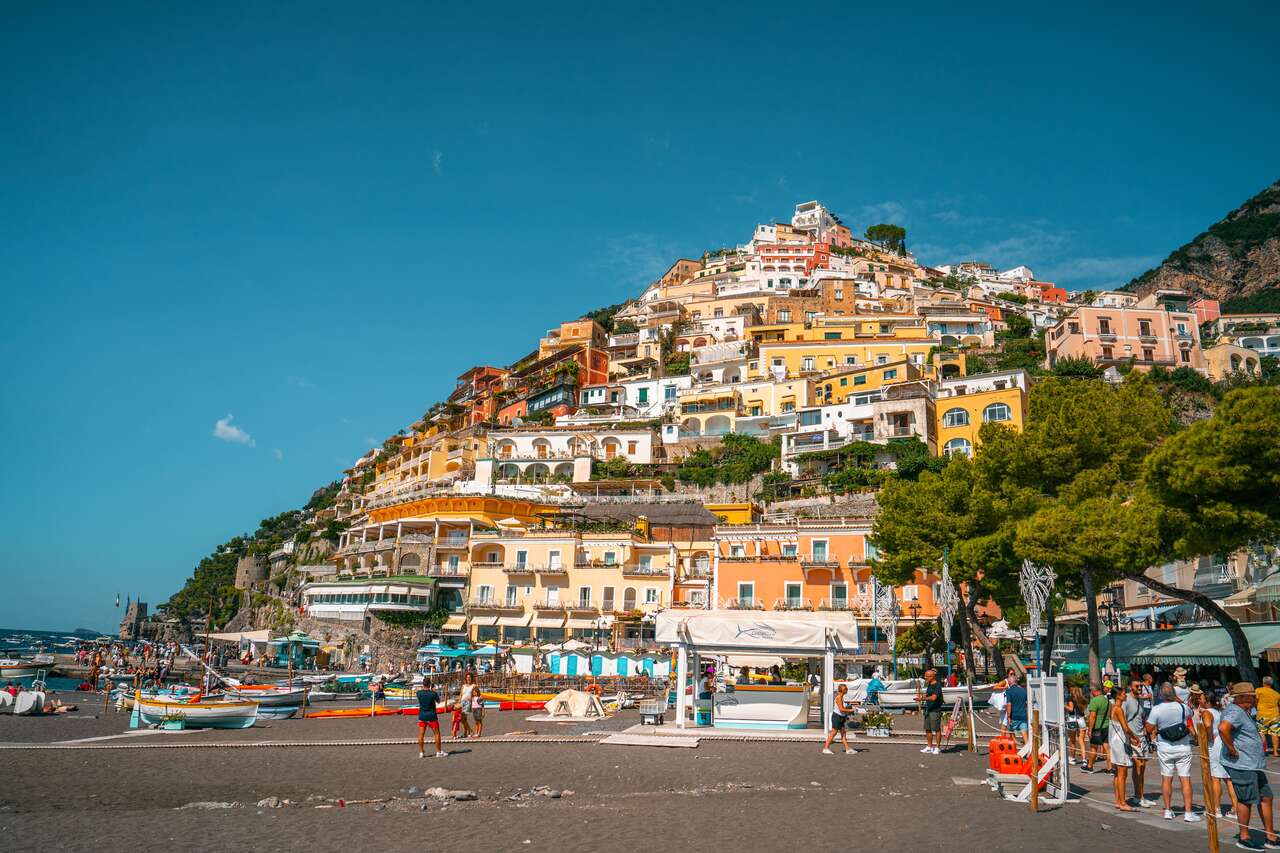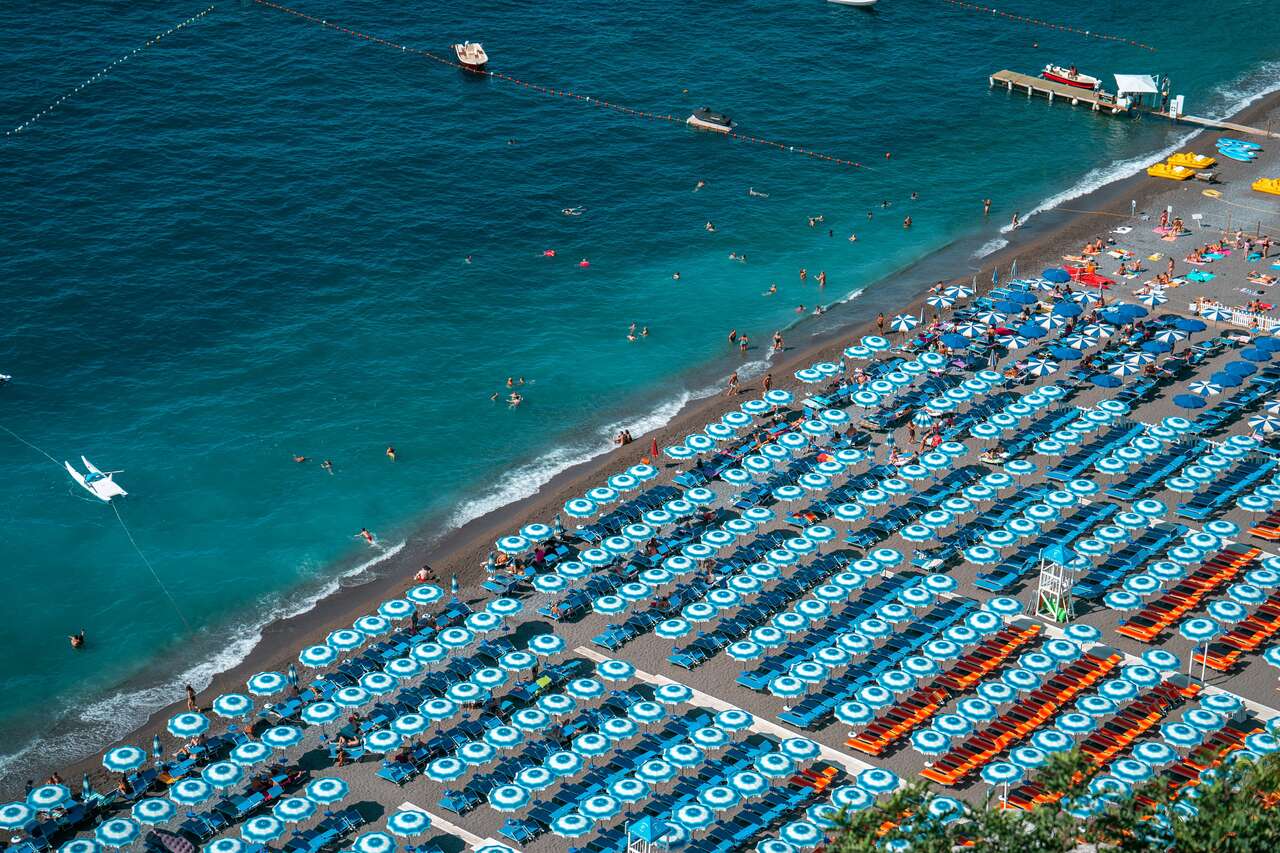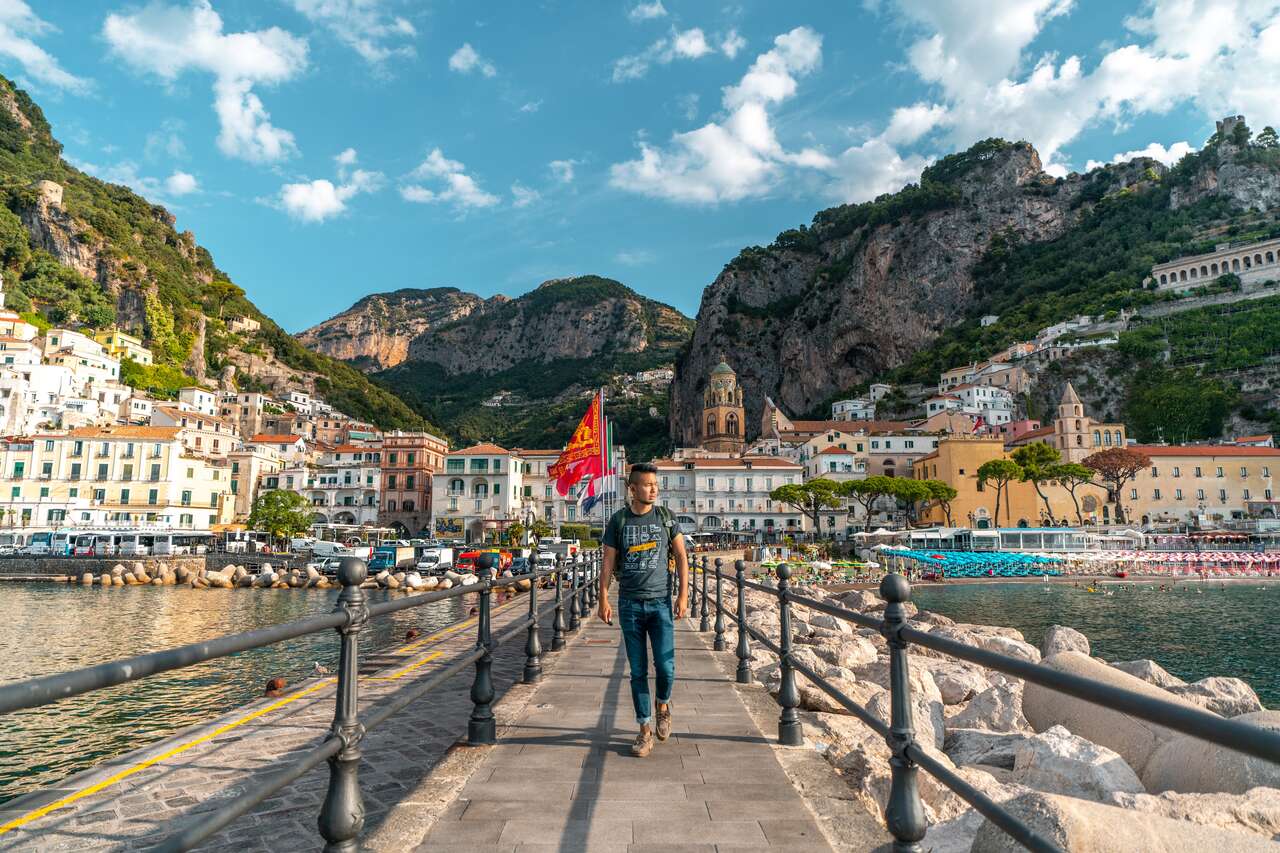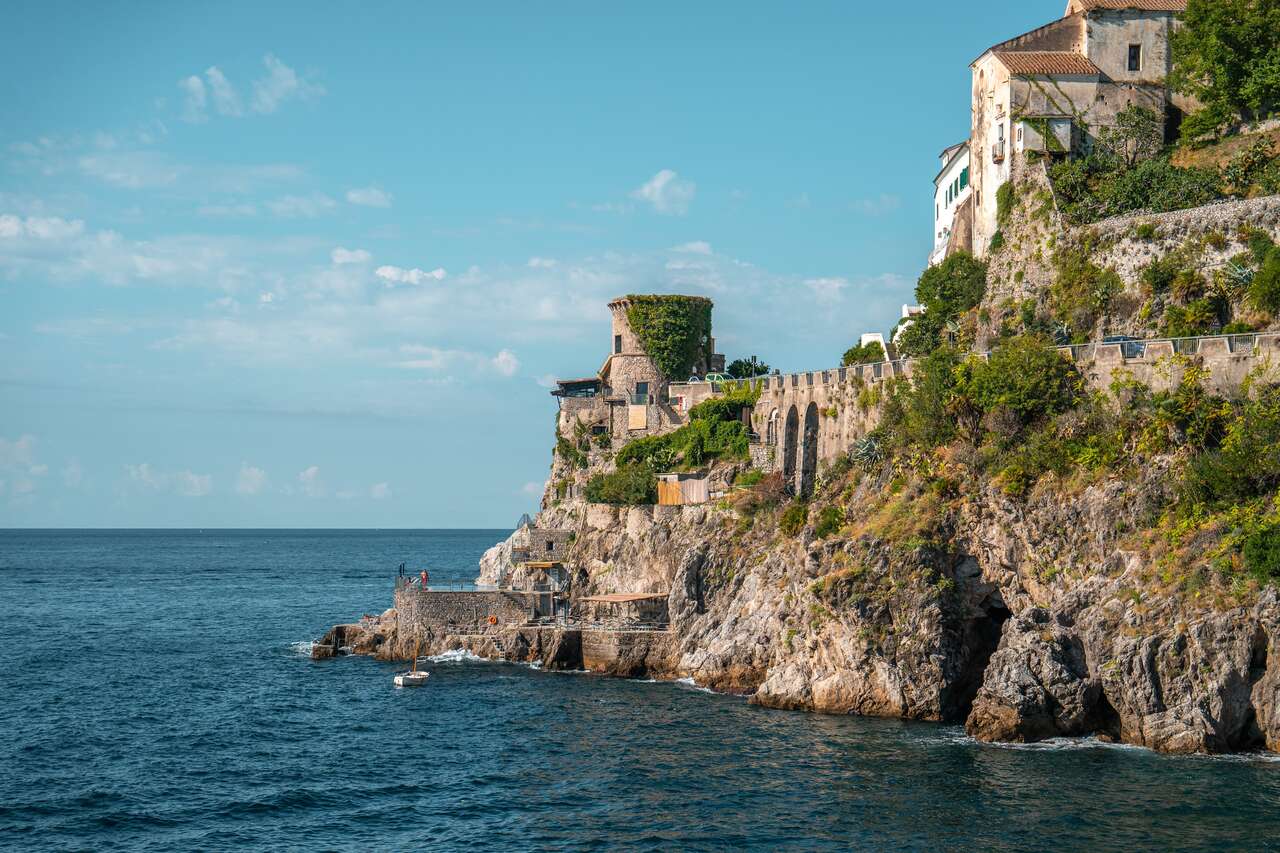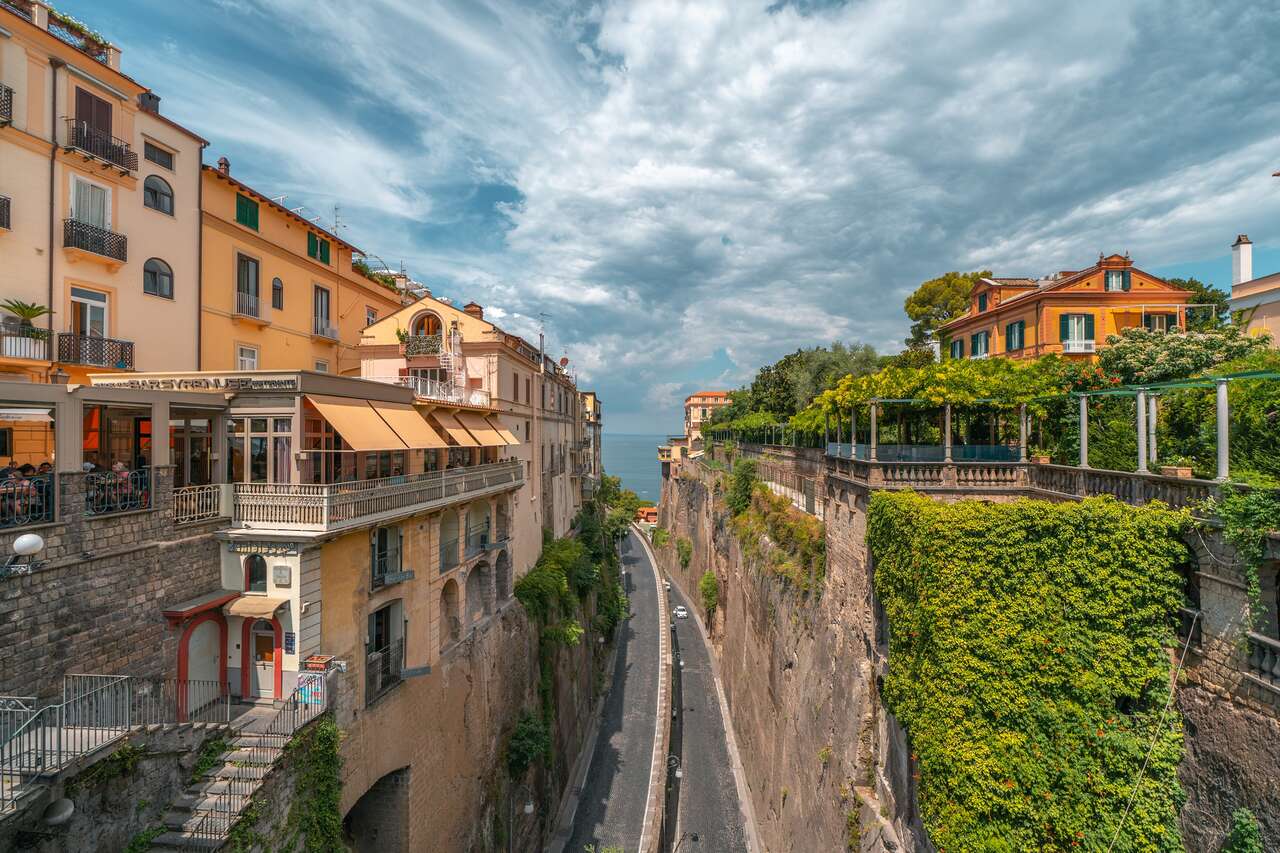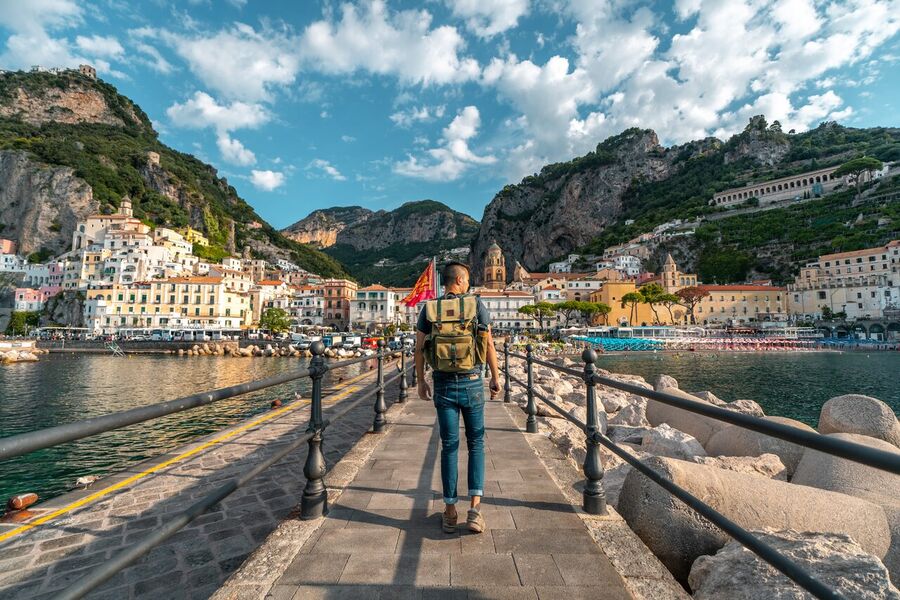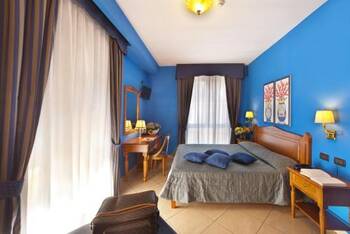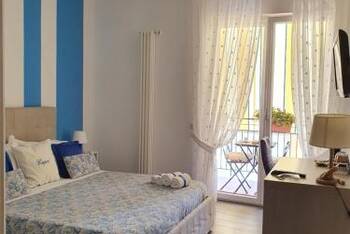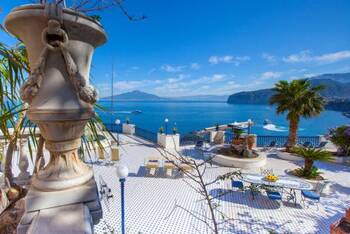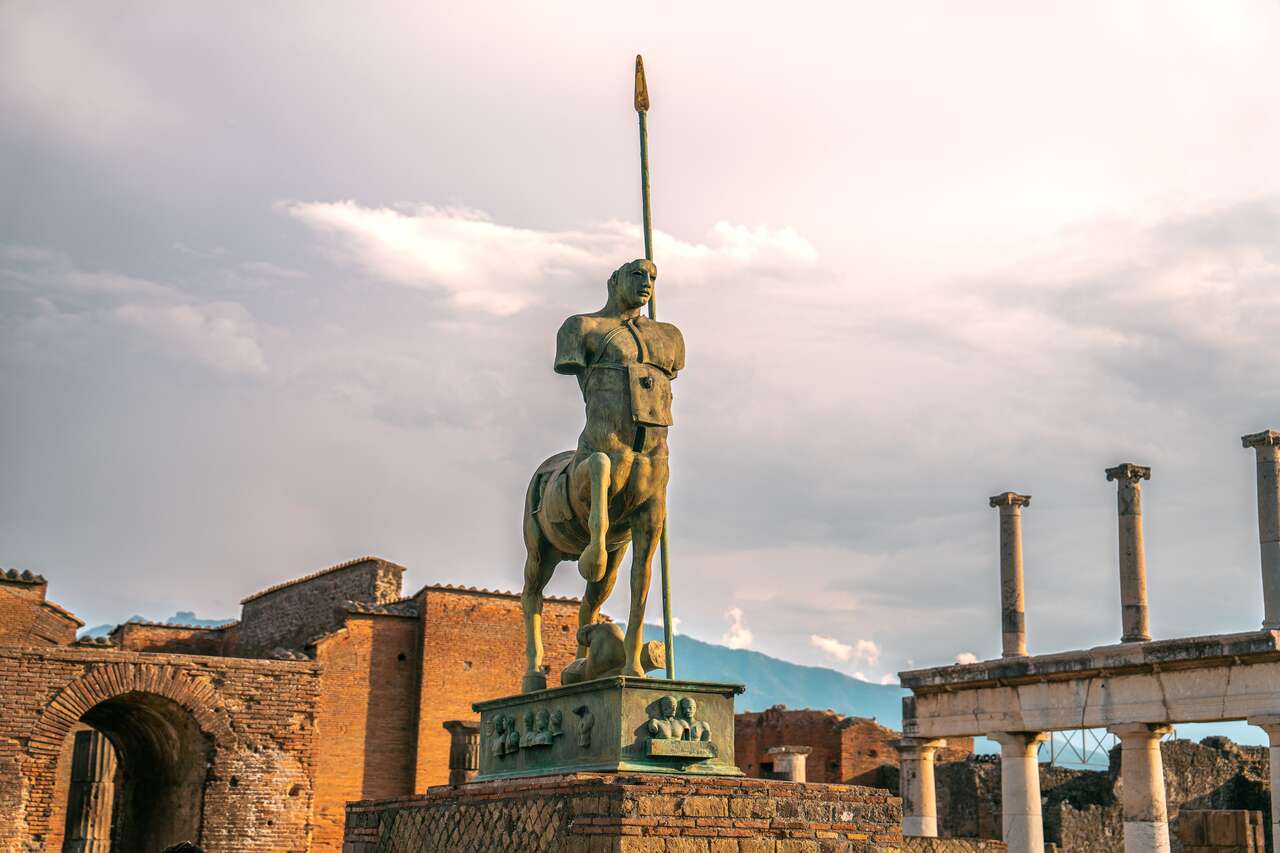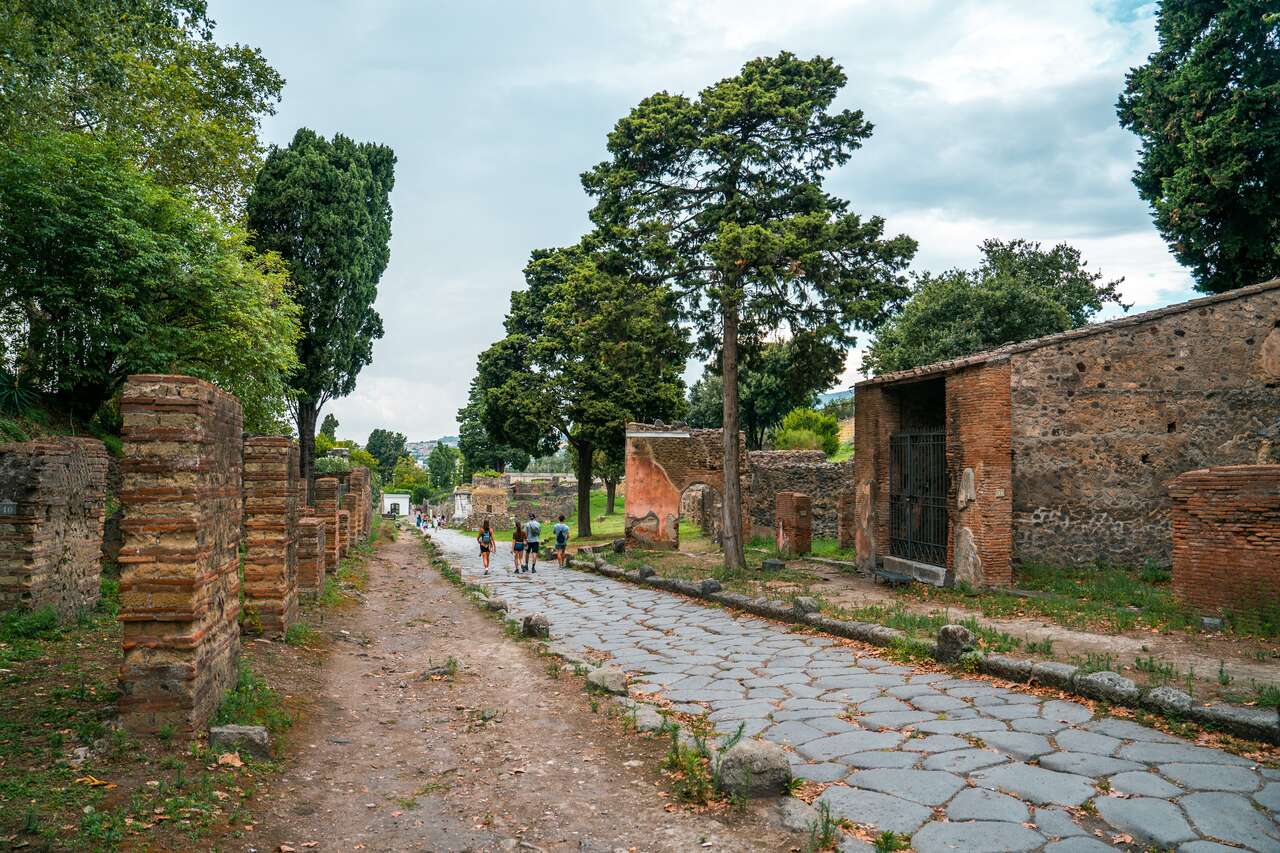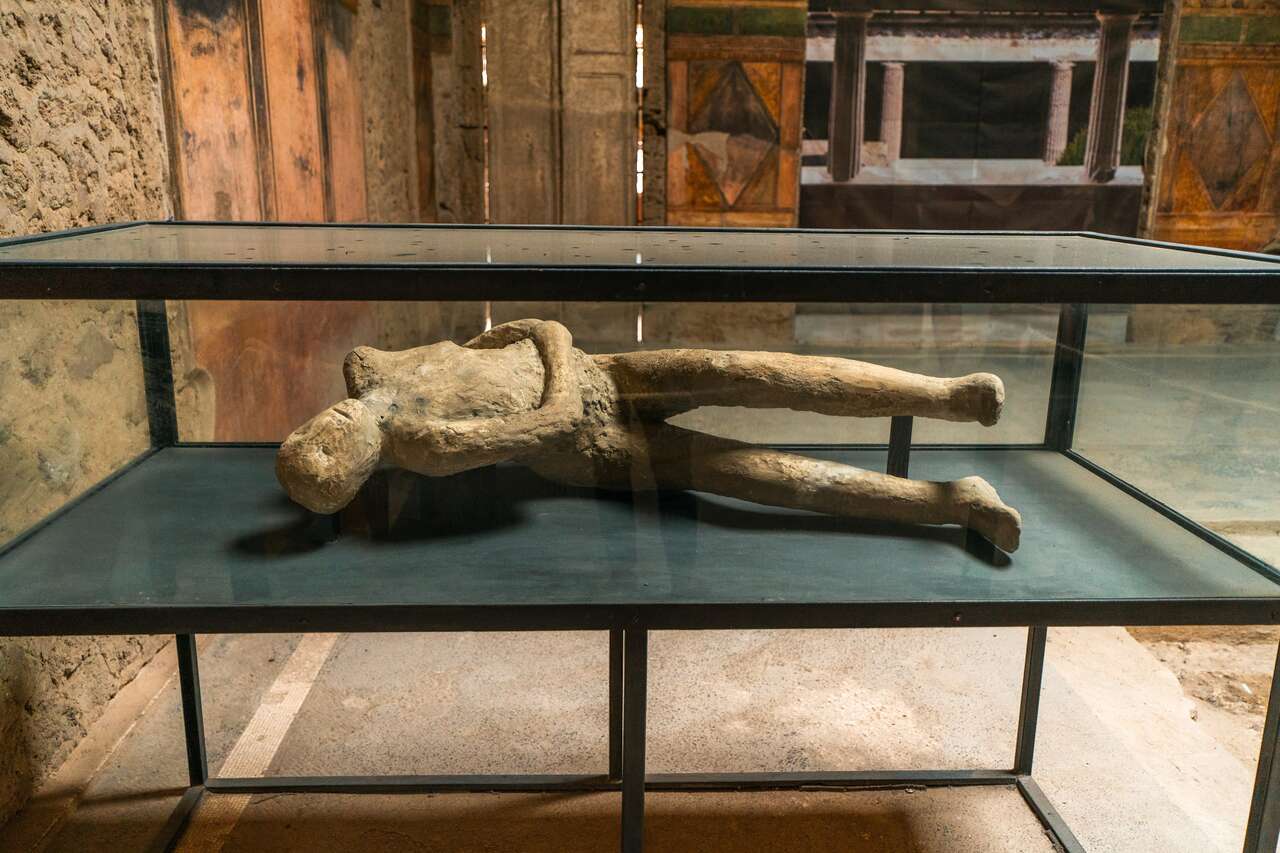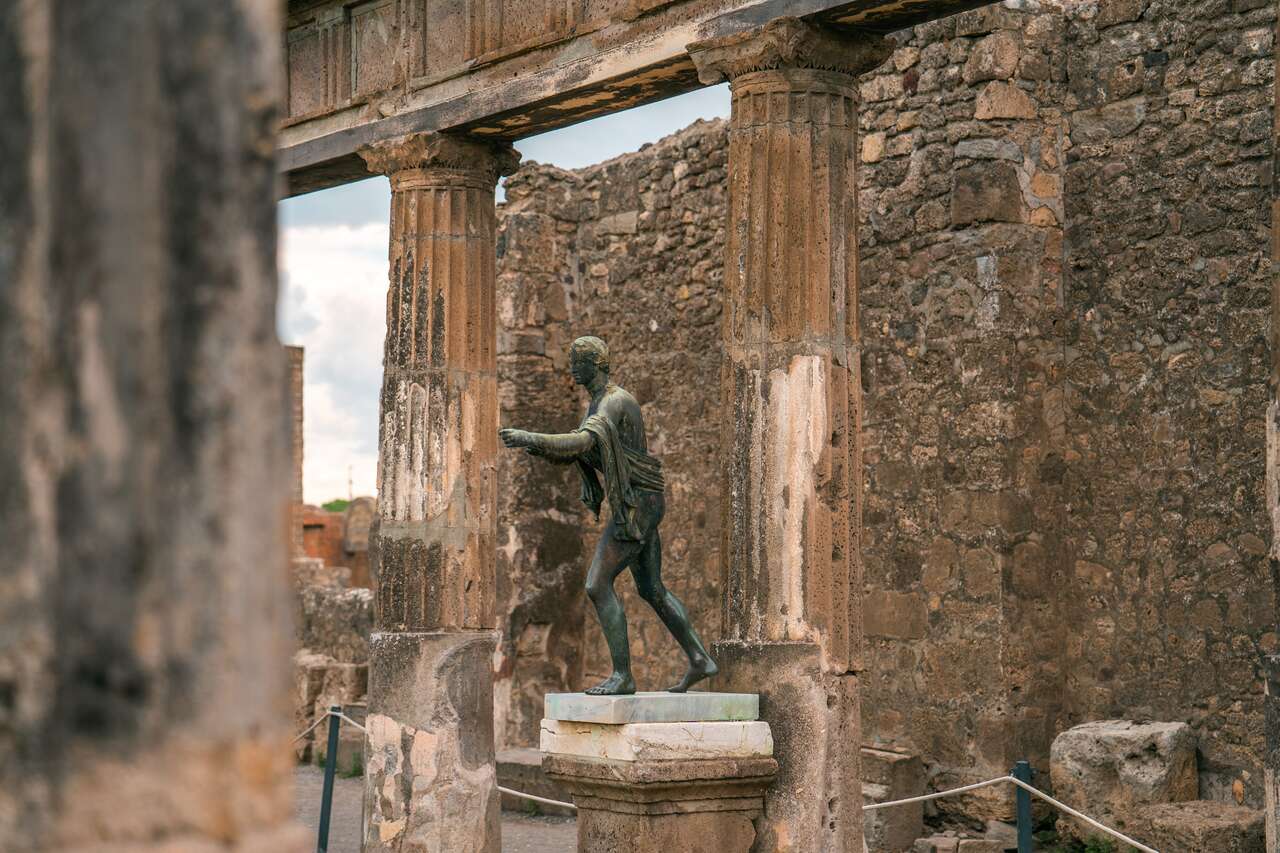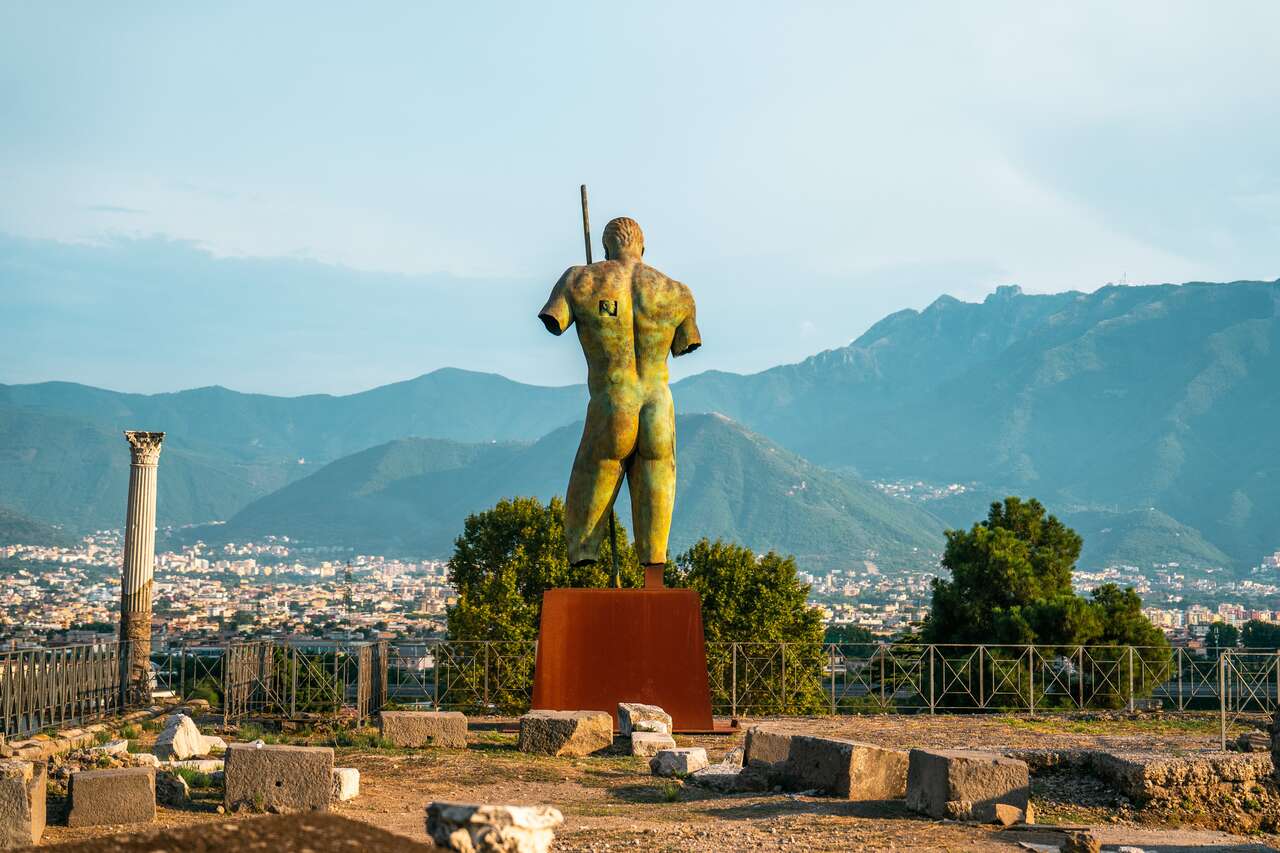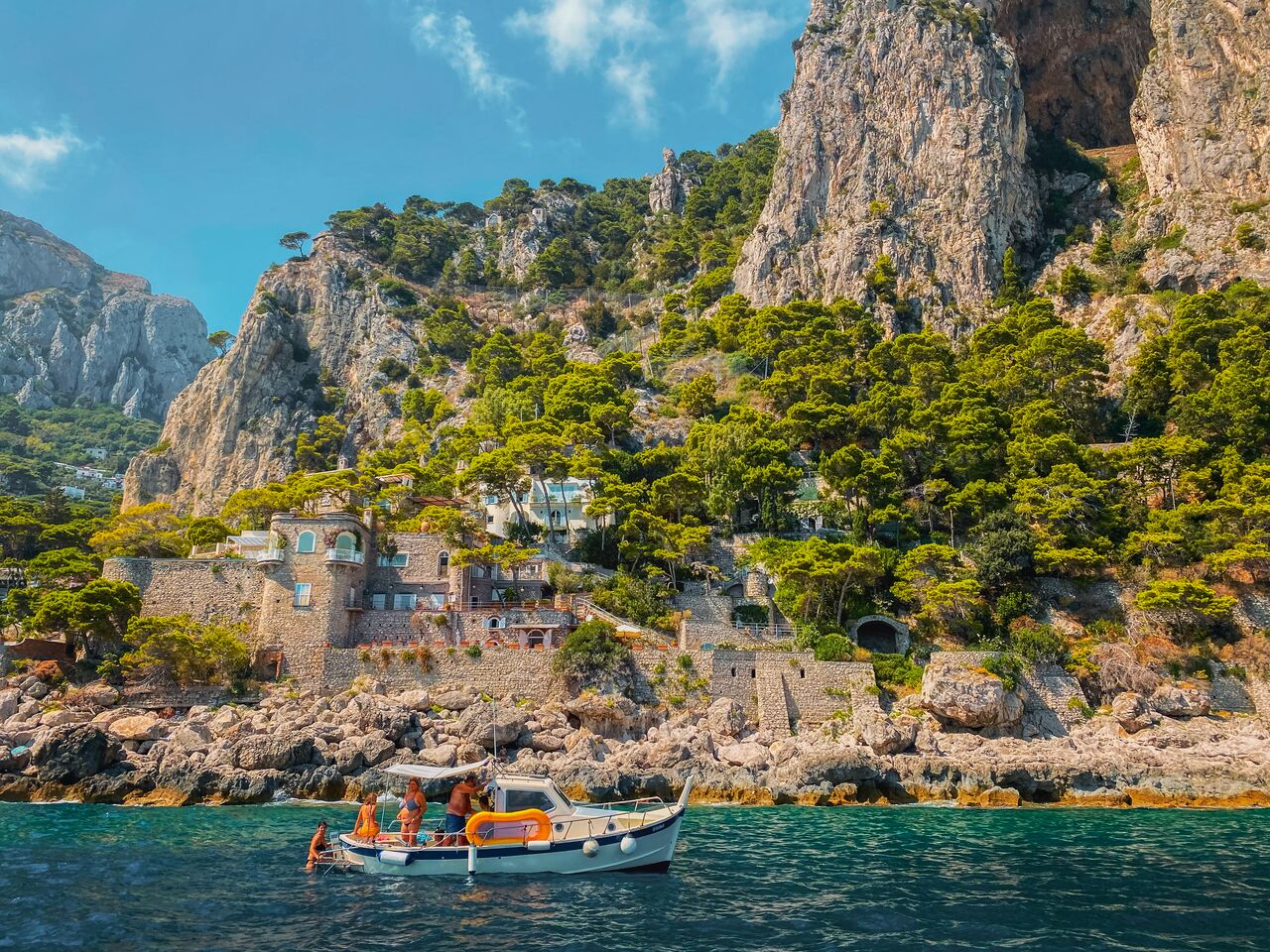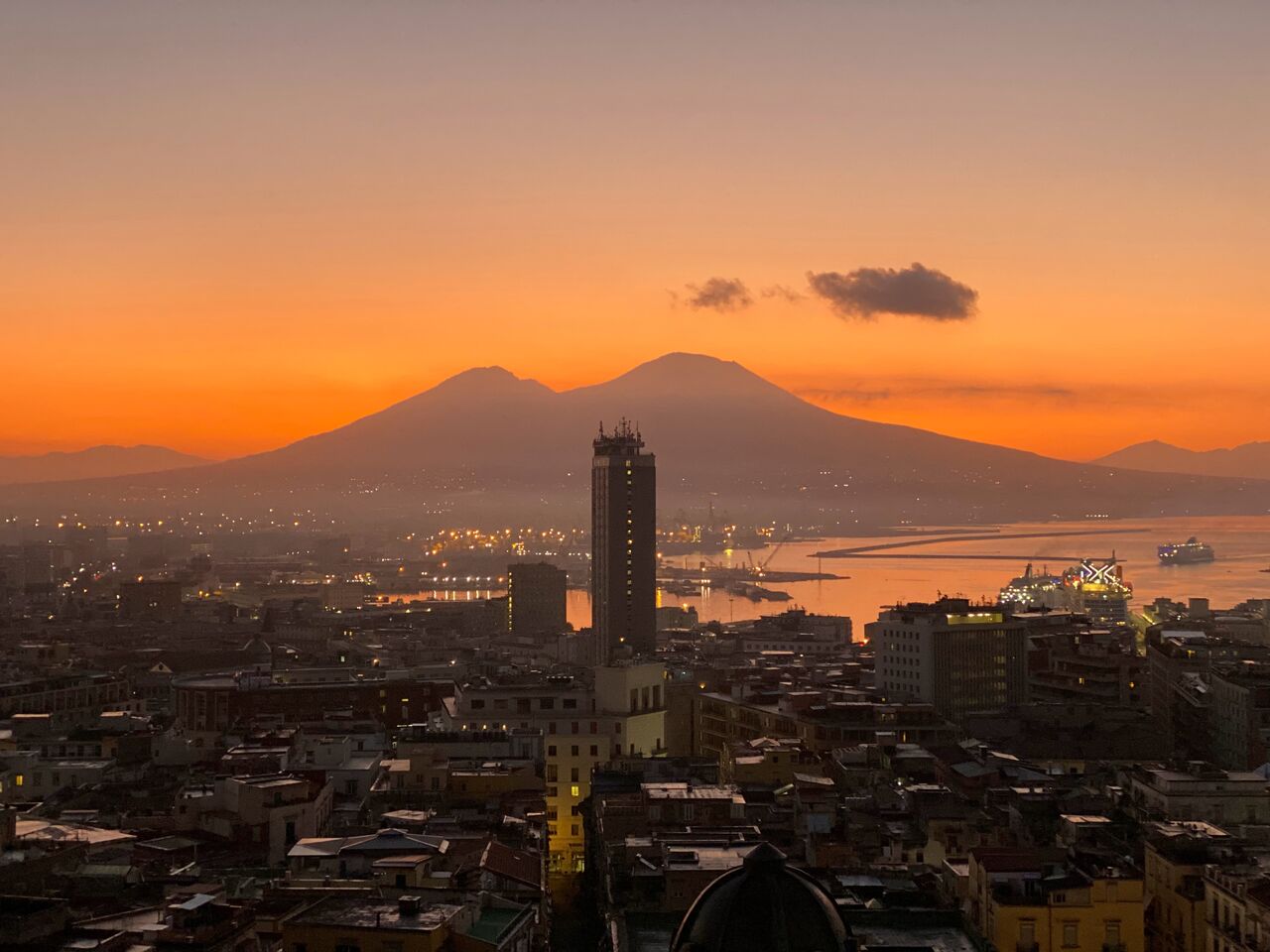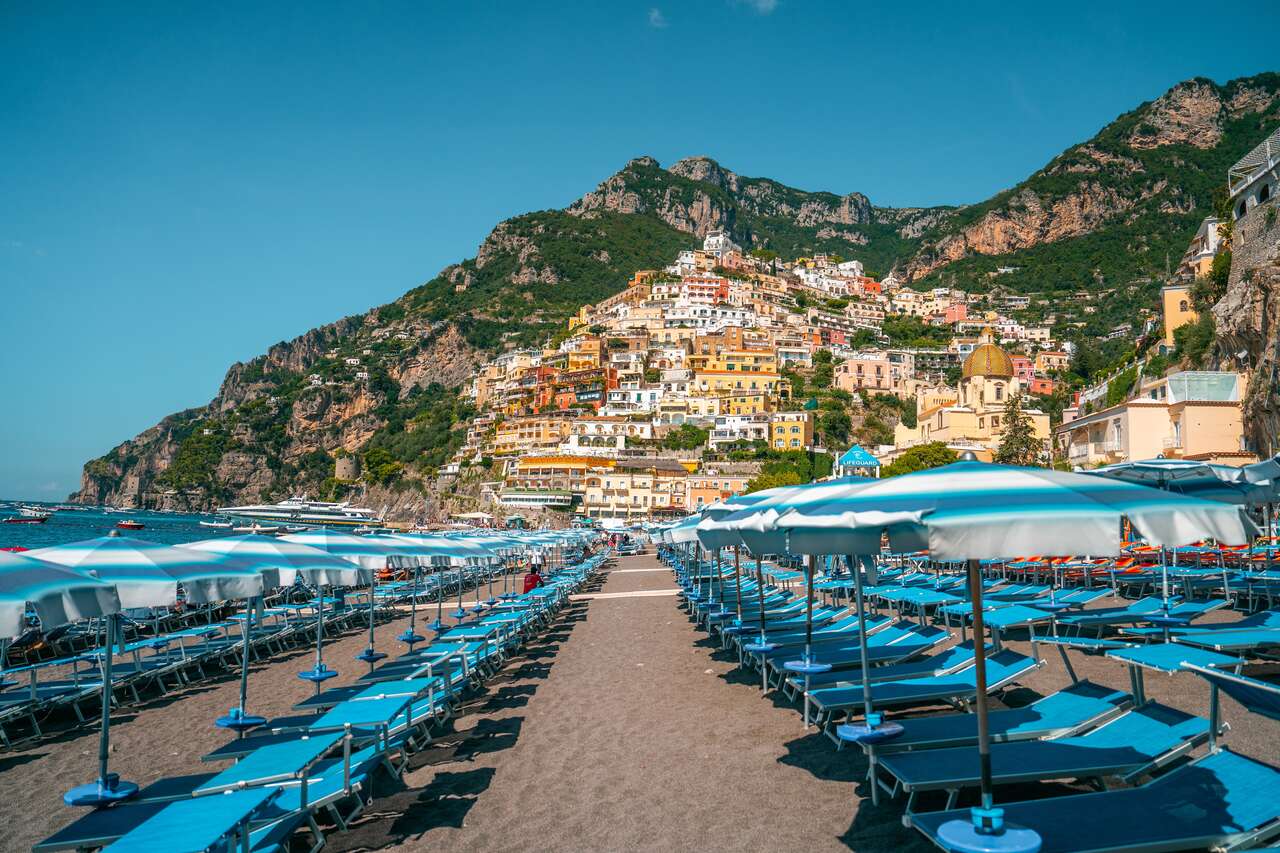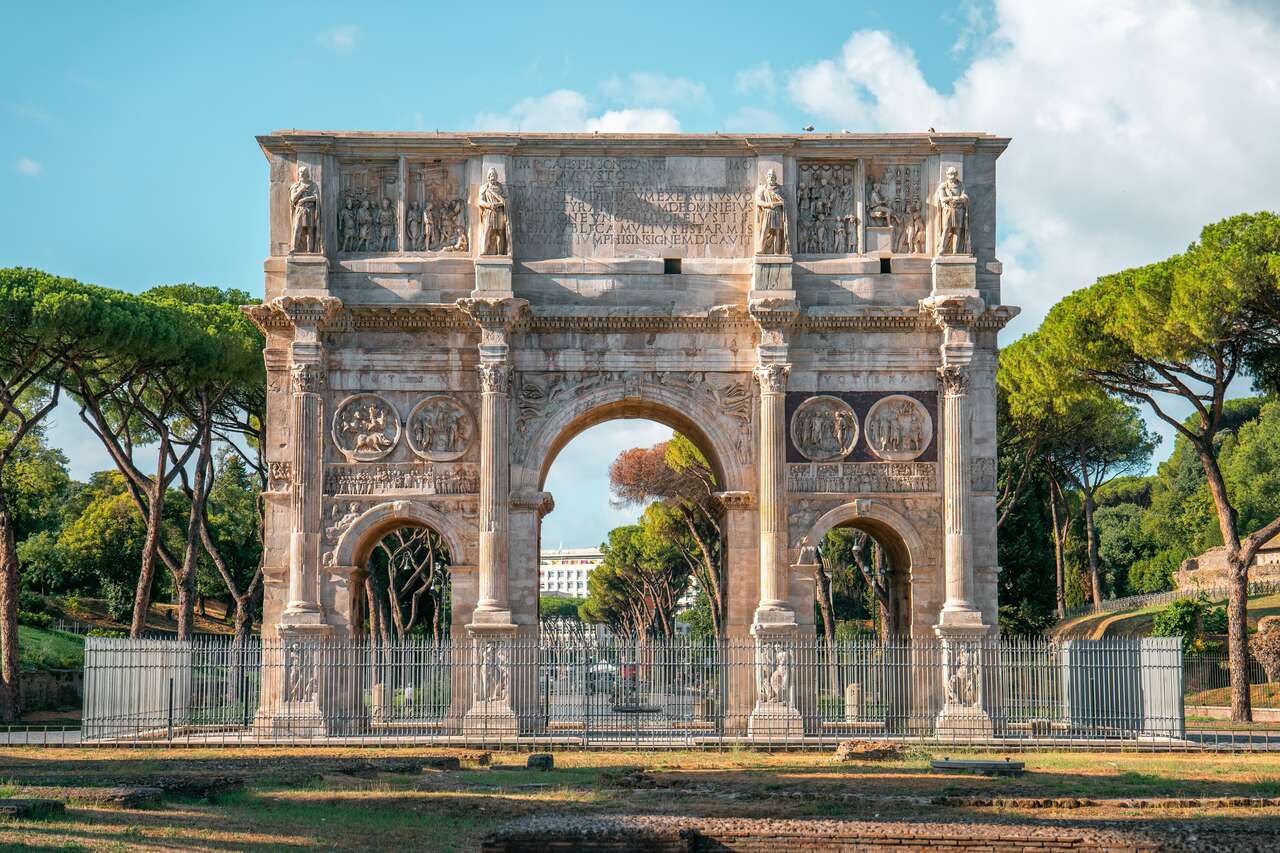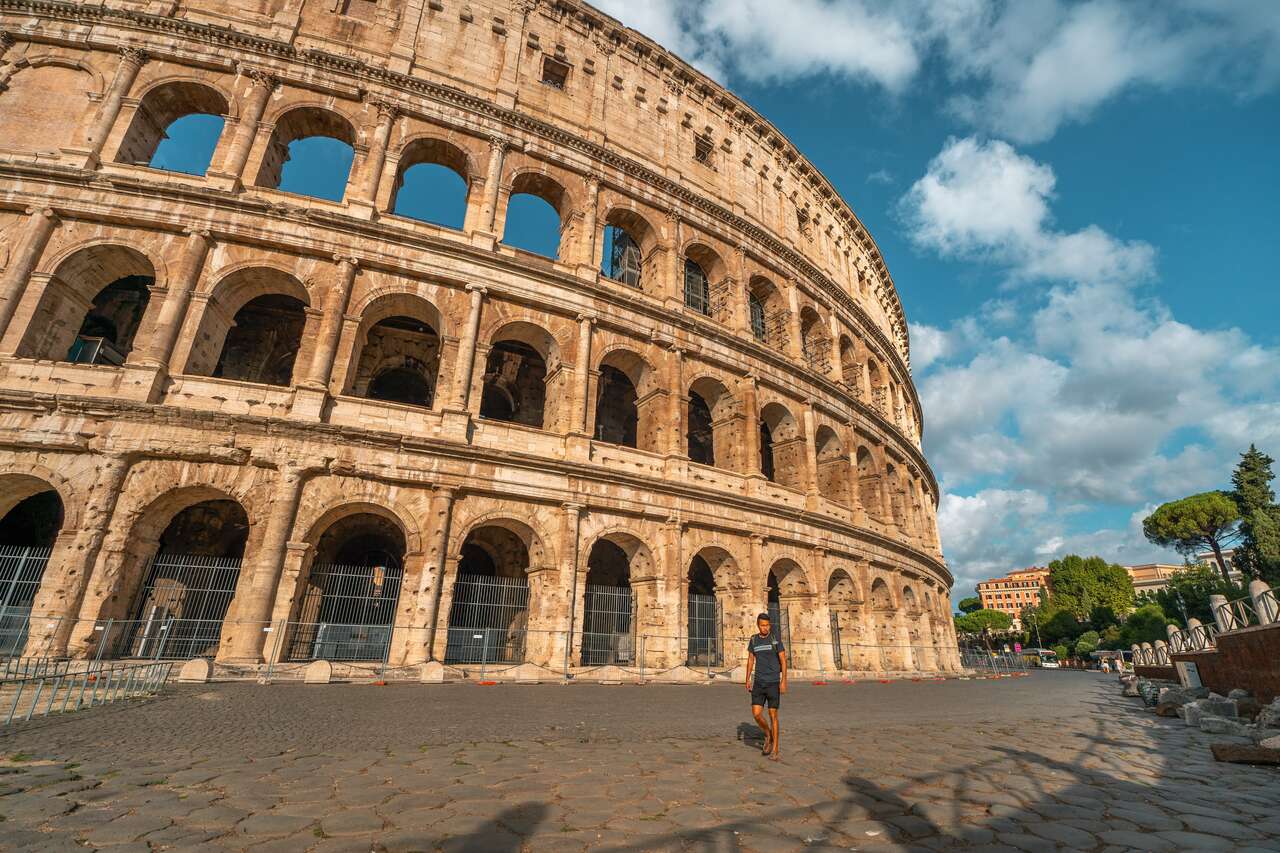Have a week to explore Italy but not sure where to begin? How about we spend 7 days exploring the dynamic region of Central Italy, visit some of the most historical cities in the world like Rome and the Vatican City and explore the beautiful coastline of Amalfi Coast?
Within this itinerary, you will find all the information you need to plan a trip around Central Italy as we take you to some of the most iconic landmarks in the world like the Colosseum as well as provide you with some time at the beach on the beautiful coastline of Amalfi in around 7 days.
Without further ado, here is the ultimate travel guide and a complete backpacking itinerary for Central Italy. Let's begin with a look at the itinerary map below:
- 7-Day Central Italy Itinerary Map
- Quick Summary: 7 Days Backpacking Central Italy Itinerary
- 7 Days Backpacking Central Italy Itinerary
- When to Visit Central Italy?
- How to Get to Central Italy?
- How to Get Around Central Italy?
- How Much Money Do I Need for 7 days in Central Italy?
- Is it Safe in Central Italy?
- Which tourist SIM card is best for Italy?
- What to Pack for Central Italy?
- Further Reading for Central Italy
7-Day Central Italy Itinerary Map
Quick Summary: 7 Days Backpacking Central Italy Itinerary




- From Rome: Pompeii, Amalfi Coast and Positano Day Trip (13 hours) 🏅 Top Pick
- From Rome: Tuscany Guided Day Trip with Lunch & Wine Tasting (13 hours)
- Rome: Amalfi Coast and Positano Day Trip with Coastal Cruise (15 hours)
7 Days Backpacking Central Italy Itinerary
Day 1: Vatican City (Half-Day)
Our journey to Central Italy begins in the Eternal City of Rome but instead of start exploring the city right away, I recommend you spend the first half of the day and visit the Vatican City, the smallest sovereign state in the world and is located entirely within the city of Rome, surrounded by walls. Be sure to get there as early as 7:30 AM to avoid the long queue.
In case you do not know, the Vatican City is the spiritual and administrative center of the Roman Catholic Church and it is the residence of the Pope himself. You can also meet him in person as he often conducts the General Admission on most Wednesdays so if you wish to meet the Pope, be sure to plan ahead and visit the Vatican City on Wednesdays.
One of the highlights of visiting the Vatican City is checking out St. Peter's Basilica, one of the largest catholic churches in the world, and climbing to the top of its massive dome for incredible views of St. Peter's Square and the surrounding Rome cityscapes. The view from up here has got to be the viewpoint you can find in both the Vatican City and Rome itself.
No time to read?
Don't worry. You can save this page to Pinterest and come back later.
Another highlight is to visit the Vatican Museums and explore all the wealth and prosperity the Catholic church was able to acquire over the centuries from the great frescoes and artworks of the Sistine Chapel to an extensive collection of all sorts of artifacts from Egyptians to Romans to Greeks and beyond.
There are so many artifacts in the museum, they have to be housed in several buildings that will take you at least 2 hours just to see the highlights of the museum, so be sure to plan your time carefully.
The Sistine Chapel is also located inside the Vatican Museums and it is probably one of the most famous chapels in the world, known for its incredible ceiling fresco painted by Michelangelo which is considered to be a masterpiece of Renaissance art depicting scenes from the Book of Genesis, including the creation of Adam and Eve and the story of Noah.
To get inside the Vatican Museum, you will have to buy a ticket online and book a time slot in advance. You can no longer buy it at the entrance so be sure to prepare your visit accordingly. You can also go on an organized tour to learn more about the history of the artworks you see in the museum.
Spend the first half of your day in the Vatican City and visit these attractions to really understand how important this unique city-state is to Rome. Again, the place gets extremely crowded during the day every day so if you do not want to be in line for hours to get inside St. Peter Basilica, be sure to get there right before the opening time of 7:30 AM.
If you are looking for more activities to do here, be sure to check out some of the available tours and day trips.
Day 1 - 3: Rome (4 Nights)
Once you are done with the Vatican City, on the same day, it is time to explore Rome proper. We start off right out of the gate of the Vatican City at Castel Sant'Angelo, a fortress, and mausoleum originally built as a tomb for the Roman Emperor Hadrian in the 2nd century AD before it was later used as a fortress, and prison by the Popes, hence why it is so close to the Vatican City.
The fortress played an important role in both the Vatican and Rome's rich history. During the Middle Ages, the fortress served as a refuge for popes during times of danger, and it also played an important role in the defense of Rome during the Renaissance and the Napoleonic Wars.
If you are interested in history, art, and architecture, Castel Sant'Angelo is definitely worth a visit but do not use the free admission perk of your Roma Card as we will be saving them for the Colosseum and the Roman Forum later the next day. Use the Roma Pass to get a discounted ticket to get in instead.
Just across River Tiber, you will find Piazza Navona, a magnificent public square located not too far from Castel Sant'Angelo, known for its three beautiful Baroque-style fountains, as well as its numerous restaurants and cafes where you can have lunch and enjoy the beautiful Rome atmosphere. It shouldn't take long to get from the fortress to the square on foot.
The square was built on the site of the Stadium of Domitian, an ancient Roman arena in the 1st century AD hence why it is oddly shaped the way it is, although the three fountains the square is known for, the Fontana dei Quattro Fiumi, the Fontana del Moro, and the Fontana del Nettuno, were later added in the 17th Century.
My favorite fountain in the square is the Fiumi Fountain which has incredibly intricate sculptures that pay homage to the 4 rivers of Rome and it features a striking obelisk right at the center of the fountain. The details of this fountain will truly blow you away.
As you continue to walk east from Piazza Navona, you will find one of the oldest landmarks in the city, The Pantheon, one of the greatest architectural masterpieces of ancient Rome that have stood the test of time for more than 2000 years.
To this day, the dome is still considered to be the largest unsupported dome in the world which goes to show just how incredible the ancient Romans were at building massive structures.
The entrance to the Pantheon is free but since COVID, the place has started to limit its capacity so you might have to queue in front of the Pantheon for a bit before you can get in.
And of course, you can't travel to Rome without checking out the famous Trevi Fountain, a beautiful Baroque-style fountain from the 18th Century featuring beautiful and intricate sculptures and designs on a scale you have never seen before.
From the Pantheon, you can continue east even further through narrow crisscrossing streets before you stumbled upon a wall of people. That is when you will see the Trevi Fountain. This place is so popular among tourists that it is almost impossible to see it empty unless you are willing to wake up as early as 4 AM to get here before sunrise.
According to legend, throwing a coin into the fountain ensures a visitor's return to Rome. I don't believe in superstition but me and my family tossed in a coin way back in the 90s and BAM! 20+ years later, I was back in Rome. Although my parents have yet to be back since then, so you tell me. 😂
Just north of the Trevi Fountain, you will find another popular landmark of Rome, the Spanish Steps, a famous set of 138 steps that lead up to the Piazza di Spagna where you can get an incredible view of Rome.
The steps were built in the 18th century in order to connect the Spanish Square below to the French Church up in the hills, hence the name Spanish Steps. The place has been popular among visitors to Rome for Centuries especially for the writers and artists of the 19th Century to gather and exchange ideas.
Climb all the way up to the french church of Trinità dei Monti located at the top of the Spanish Steps and check out the view before we continue our exploration around Pincio Hill.
As you continue north from the top of the Spanish Steps, you will find Passeggiata del Pincio, a famous promenade at the top of Pincio Hill that offers an incredible view of the city.
The promenade is known for its picturesque gardens and terraces, as well as its historic monuments such as the Obelisk of Monte Mario and an observational deck with a sweeping view of Piazza del Popolo, a historical square where the oldest obelisk in Rome is located, from above. This is a great place to watch the sunset over the city of Rome.
If you want to kill some time while you wait for the sunset, you can also check out Villa Borghese, a beautiful public green space covering more than 80 hectares of land atop Pinchio Hill located right next to Passeggiata del Pincio.
You will find many beautiful fountains and sculptures scattered over the park as well as other tourist attractions such as the Temple of Aesculapius, the Pincio terrace, and the Bioparco, a zoo with a collection of animals from around the world.
After a jam-packed first day in Rome, it is time to retreat for the night and prepare yourself for the second day where we will be exploring the iconic landmarks of Rome such as the Colosseum, Roman Forum, and more. Be sure to book a time slot (make it in the morning for the best experience) for your Colosseum visit in advance, even if you have the Roma Pass, as they have a daily limit capacity.
For the second day in Rome, we are going to start early again and be at the Colosseum around 7:30 AM so you can stroll around the area and get some photos without the crowds.
Depending on which time you are able to book a time slot to get inside the Colosseum, you can either wait until the gate is open or explore the Roman Forum and Palatine Hill while you wait for your booked time slot.
Using the 2 free admissions of the 72 hours Roma Pass, you will be able to get access to the Colosseum for free as well as the Roman Forum and Palatine Hill, which is considered as one single attraction.
You can spend about an hour here and explore the 2 levels of the Colosseum as well as the museum inside which is more than enough to see just how impressive the Colosseum is.
With the Roma Pass, you won't be able to access the arena and the underground area unless you buy a separate ticket especially to get access to these areas.
Personally, I don't think the arena is worth it as you can also see the same view from the opposite side with the regular ticket. The underground is worth it if you really want to see the excavation site with your own eyes but you will still have to go with a guided tour as it is mandatory.
Next up, we visit the Roman Forum, an ancient Roman rectangular plaza surrounded by the ruins of several important ancient buildings located right by the Colosseum.
Walking around the Roman Forum is almost as if we have stepped back in time as you stroll past ancient sights like the Temple of Saturn, the Temple of Vesta, the Curia (Senate House), the Arch of Septimius Severus, and the Basilica Julia.
While you are inside the Roman Forum, be sure to spend some time exploring Palatine Hill, one of the Seven Hills of Rome, that played a significant role in the creation of Rome itself.
Around Palatine Hill, you will find all sorts of historically significant ruins like the Palace of Augustus, the House of Livia, the Palace of Tiberius, and the Flavian Palace, which was a luxurious palace complex that includes the remains of a palace, a stadium, and several thermal baths.
For the best viewpoint in Palatine Hill, I highly recommend you check out Terrazza Belvedere del Palatino, a beautiful terrace overlooking the Roman Forum where you will be able to get a sweeping view from the Colosseum all the way to the Altar of the Fatherland.
After you are done with the Roman Forum, continue walking the path towards the northern exit which is right by our next destination, Campidoglio or Capitoline Hill, one of the other Seven Hills of Rome, home to some of the oldest museums in the city.
Here you will find an impressive Renaissance square, the Piazza del Campidoglio, designed by Michelangelo himself way back in the 16th century, and the Capitoline Museums, one of the oldest public museums in the world that house a vast collection of art and artifacts from ancient Rome. You can check the museum out too if you are interested in history and art.
As we continue our journey north, you will stumble upon another important landmark of Rome, the Altar of the Fatherland, a massive marble monument dedicated to the first king of a unified Italy to commemorate the first anniversary of the king's death in 1900.
You can climb its 243 marble steps to get to the balcony on top of the monument and you will be rewarded by the amazing views of Rome's cityscape right at your fingertips, all for free.
And that is it for our second day in Rome. You can spend some time and explore the area where your accommodation is located or check out some of the many awesome local restaurants in Rome like Il Cuore Di Napoli Ribelle Restaurant, one of my favorite family-run restaurants in the city.
They serve local dishes with a variety of seasonings and flavors from seafood pasta to original Napolitan pizzas at a very reasonable price. I tried their seafood pasta dish and I love it! If you are looking for a nice place to eat out in the evening, be sure to check them out.
On our third day in Rome, we are going to get off the beaten path a little and explore some of Rome's best-kept secrets as well as visit all the other major churches and basilicas that are located outside the usual tourist areas.
We first begin our day by taking bus #118 from the Colosseum to Via Appia Antica or the Roman Appian Way, the first wheeled vehicles road ever built by the Romans, and spend the morning biking along its beautiful cobblestone street and check out some of the tourist attractions along the way.
You can rent a bike from this local bike store for 10 EUR for 2 hours and ride the road yourself or you can go on one of the many biking tours which will allow you to learn more about all the tourist attractions in this area as well as transferring you from Rome to here and back.
Some of the most notable attractions along the Appian Way are the Catacombs of St. Callixtus, an immense underground cemetery excavated by the Christians of Rome from the 3rd to the 5th century AD, the Catacombs of Saint Sebastian, another ancient tunnel used as an underground tomb, and more, so be sure to check it out while you are here.
Once you are done at the Appian Way, you can then take the bus to the Baths of Caracalla, an incredibly well-preserved public bath complex and one of my favorite ruins in Rome, which I prefer even more so than the Roman Forum and the Colosseum themselves.
The bath complex was built during the reign of Emperor Caracalla between 212-216 AD covering an area of around 30 hectares. The place is considered to be one of the largest and most impressive public bath complexes of the ancient Roman world and you can really feel the true scale of the place as you stroll along the path passing through its giant arches and domes.
Since not many people know about this place, you won't see as many tourists here as in places like the Colosseum and the Roman Forum which I think were way too crowded for my liking. The Baths of Caracalla, on the other hand, is just perfect.
From the baths complex, you can either walk for around 1.5 km or take bus #81 to get to Basilica di San Giovanni in Laterano, the mother church of all the churches in the world, and one of the 4 major basilicas to visit in Rome.
Out of all the four major basilicas in Rome, Basilica di San Giovanni in Laterano is the oldest and highest ranking of all, holding the unique title of "archbasilica". It was founded in 324, which makes it the oldest public church in the city, and the oldest basilica in the Western world.
The moment you walk inside, you will see why this place is the mother of all churches. The interior of the basilica is lavishly decorated from top to bottom with beautiful sculptures, artworks, and mosaics that are incredibly pleasing to look at. It was quite a sight to behold.
From Basilica di San Giovanni in Laterano, we can then take the metro or the bus to Rome Termini stop and visit our last tourist attraction, the Basilica Papale di Santa Maria Maggiore, another one of the major basilicas to visit in Rome.
Each wing of the basilica is like its own different church with unique features and decorations that will blow you away at every turn. Right at the center of the basilica, just beneath the Altar of the Sistine Chapel and Oratory of the Nativity, you will also find a crypt with a crystal reliquary said to contain wood from the Holy Crib of the nativity of Jesus Christ so be sure to check that out too while you are there.
And that is it for our third day in Rome. You can spend the rest of the day relaxing at your accommodation or go out and try out all the delicious local cuisine before you call it a day. Be sure to book a train ticket to Naples where we will be taking another local train to visit the Amalfi Coast.
If you are looking for more activities to do here, be sure to check out some of the available tours and day trips.
Where to Stay in Rome?
Getting from Rome to Amalfi Coast
From Rome to Amalfi Coast, you are going to have to take a train from Roma Termini to Napoli Centrale first and from there, switch to an L1 train, which is operated separately from Trenitalia, and it will take you to Sorrento, our base on the Amalfi Coast, in less than an hour.
There are many trains running between Rome and Naples starting from 5 AM all the way to 11 PM every day. This leg of the journey should take about 3 hours and cost around 30 - 40 EUR. You can get your train ticket online from here.
From Naples to Sorrento, you can only buy a train ticket from the train station but don't worry, there is plenty of space on the train so you do not need to book it in advance. The train ticket should cost about 5 EUR and takes around 1 hour to reach Sorrento.
Day 4 - 5: Amalfi Coast (4 Nights)
Once you arrive at Sorrento Train Station, I highly recommend you find a travel agency near the train station, and buy the COSTIERASITA card, a 10 EUR transportation card that will give you unlimited access to the SITA bus, the bus system that runs along the Amalfi coast, for 24 hours after the first validation.
This way, you can explore the Amalfi Coast all day the next day without having to worry about bus fares. Unfortunately, you can't buy the COSTIERASITA card online just yet but there are plenty of travel agencies and the train station so you should have no trouble getting your hands on one.
After you got the card and settled into your accommodation, you can start exploring this holiday hot spot by visiting its beautiful old town and checking out some important landmarks like Chiostro di San Francesco, a tranquil 14th Century monastery, perfect for escaping the crowds, stroll around Villa Comunale di Sorrento and check out the ocean view from there.
You can also spend the rest of the first evening in Sorrento at one of the many swimming areas and beaches like Peter's Beach and Bagni Salvatore, swimming, sunbathing, and really enjoying the beautiful coastline of Sorrento before we explore the rest of Amalfi Coast the next day.
On the fifth day of this itinerary, we will begin exploring the wonderful Amalfi Coast proper by starting our journey at Positano, the picturesque seaside town, known for its iconic colorful houses cascading down a steep hillside to the sea.
If you wake up early enough and was able to catch the first bus leaving from Sorrento to Positano, you might be one of the few people who have a chance to see Positano without tourists, which is not so easy to come by as this place is almost always crowded all the time.
Even way back in the Roman time, the city had been a popular destination for wealthy Romans, before it became a center of maritime trade during the medieval period, and eventually become a tourist attraction from the 20th Century to this day.
Traveling by bus, I highly recommend you get off at this bus stop so that you can walk through the most beautiful part of Positano first as the walking path zigzags its way along the cliff, overlooking the colorful cascading houses and the beach below.
As you continue to walk down the walking path, you will be passing through some of the prettiest parts of Positano that seem like they came straight out of a fairytale. From colorful houses and flowers to small markets selling fresh fruits and souvenirs, it is almost impossible to put into words just how incredibly breathtaking this place is.
Once you arrive at the beach, you will have the option to either pay to get into one of the many private beach areas and rent a sunbed for 25 EUR per day and get access to its facilities including toilets, bars, restaurants, etc.
Or you can go to the free strip of public beach which is very small and can get extremely crowded during the day. Unfortunately, this is a big problem in Amalfi Coast as well as the rest of Italy since more than 70% of Italian beaches have already been commercialized which makes it difficult for us backpackers to really enjoy nature for free, which is what it should be.
Despite that fact, you can still walk around the beach area for free and take photos so make sure you make it all the way to the beach before you head over to the next station. Also, there are many great viewpoints in Positano if you don't mind hiking around the area.
You can stroll along the narrow streets of Amalfi Coast and make your way to Costiera Amalfitana Positano along its winding coastal roads for an incredible view overlooking the sea. It is quite a walk through and with the summer heat, it can be quite difficult to tackle if you are not used to the heat so take it slow.
After you are done, you can walk back to the same bus stop you got off at and wait for the next bus to take you to our next destination, Amalfi, another old town since the Roman time which gave this coastline its name.
From Positano, it should take around an hour by bus before you arrive at Amalfi Town, another charming town known for its stunning coastline, historical architecture, and charming Mediterranean atmosphere, that you should definitely not miss.
Again, Amalfi is another important town with a rich history that dated back to the Roman Time but unlike Positano, there are many things to do here than just swimming and sunbathing at the beach.
While you are in Amalfi, be sure to check out Duomo di Amalfi, a beautiful 9th Century cathedral known for its iconic Norman-Arab-Byzantine-inspired stripe facade as well as the 1800s frescoes you can find inside. It's a nice walk from the bus stop and one of the first places you should visit while here.
You can also hike up to Torre dello Ziro for an incredible view over Amalfi and the coastline or if you are not much of a climber, you can just walk up to Belvedere cimitero monumentale which should give you a pretty nice view of Amalfi from above as well.
After you are done with Amalfi, go to this tunnel entrance located in the town square, walk through it for about 15 minutes, and you will arrive in Atrani, another picturesque town on the Amalfi Coast, known for its charming atmosphere and traditional architecture.
Other than its picturesque surrounding, Atrani is also known for its small tight-knit community, which gives it a unique and authentic feeling, unlike the other 2 towns we just visited.
While here, you can explore the town's winding streets, lined with colorful houses and traditional shops, and admire the beautiful views of the sea.
This place also has a much better public beach area than the other 2 towns boasting a significantly larger public beach with fewer people making it a great place to stop for a while and take a dip in the Tyrrhenian sea.
After spending the entire day exploring the Amalfi Coast, it's time to head back to Sorrento and call it a day. To get back from Amalfi to Sorrento, you just have to catch the same SITA bus back to Sorrento using the same COSTIERASITA card and you will be back at your accommodation in around 1.5 hours.
If you are looking for more activities to do here, be sure to check out some of the available tours and day trips.
Where to Stay on the Amalfi Coast?
Getting from Sorrento to Pompeii
From Sorrento to Pompeii, you just have to take the train from Sorrento Train Station and get off at Pompei Scavi Villa Dei Misteri, and you should be right at the entrance of the archeological site. The train ticket should cost around 2.5 EUR per person per trip and it should take no more than 20 minutes to get there.
Since we will be visiting Pompeii as a day trip, you will also have to take the train back to Sorrento which follows the same instruction as above but in reverse. Just make sure to make your way back to the same exit on the western side of the park so you do not have to walk back outside.
Day 6: Pompeii (Day Trip)
On our sixth day in Central Italy, we are going to visit the famous ancient Roman City, Pompeii, the city that was almost wiped off the face of the planet by the gigantic volcano Vesuvius located not too far from the ruins.
Pompeii is known for its incredible preservation as the city was completely buried and preserved by ash and pumice following the eruption of Mount Vesuvius in AD 79. Before the eruption, Pompeii was a striving city of around 11,000 people and one of the biggest cities of its time.
The eruption buried the entire city under meters of ash, which in turn preserved the city and its buildings, as well as the remains of its inhabitants, all of which remain intact to this day.
Within Pompeii, you will be able to get a glimpse of what life in a Roman city like Pompeii was like back in the day as you stroll around its cobblestone street, surrounded by houses and villas.
In between these well-preserved structures, you will also find some incredible features like preserved wall paintings or beautiful floor tiles that provide us with enough details to imagine what the Roman houses may have been like way back when.
In some places, you will also find casts of the bodies of the victims of the eruption, which give a unique insight into the lives of the people of Pompeii. Basically, the cast bodies allow us to literally see the last moment of their lives. It was both eerie and fascinating at the same time.
Pompeii is incredibly big and you can expect to spend around 3 - 4 hours to really see them all. Be sure to visit Villa dei Misteri, a villa with well-preserved colorful frescoes, the Sanctuary of Apollo, and the Amphitheater of Pompeii, a large well-preserved amphitheater that can hold over 10,000 people in it.
There is also another well-preserved Roman city nearby that you can visit called Herculaneum which some claimed to be even more well-preserved than Pompeii and you can easily visit the area with a guided tour which will help organize transportation for you as well as guide you through each archeological sites in great details.
For those who want to visit Pompeii as well as other sights nearby like Herculaneum, and Mount Vesuvius, you can also check out one of these organized tours that will allow you to see these places without having to worry about the logistics:
If you are looking for more activities to do here, be sure to check out some of the available tours and day trips.
- From Pompeii: Small-Group Pompeii and Herculaneum Tour
- From Sorrento: Pompeii & Herculaneum Tour with Skip-the-Line
- From Sorrento: Day Tour to Pompeii Ruins and Mount Vesuvius
Day 7: Capri (Day Trip)
On our 7th day of this itinerary, we are going to visit Capri, a small island just off the coast of Sorrento, best known for its picturesque landscapes, and the Blue Grotto, a sea cave that is illuminated by an underwater light, creating a mesmerizing blue hue, and spend the rest of the day relaxing, absorbing the beautiful sceneries, and swim to your heart's content before we head back home.
There are several ways you can visit Capri. One is to do it independently by taking a ferry from Sorrento pier to Capri which should cost around 22 EUR per person per trip and takes about 25 minutes. You can book the ferry ticket here.
If you decided to visit Capri independently, you will have plenty of time to relax and go for a swim or if you wish to see more of the island, you might want to consider going on an organized tour to visit the Blue Grotto which is only accessible by boat. The tour should cost no more than 20 EUR per person.
If you just want a convenient way to visit Capri without having to deal with all the logistics, you can also go on one of the many organized trips from Sorrento that will take you to Capri and visit all the tourist attractions such as Blue Grotto as well as give you plenty of free time to chill and relax, all in one go. Below are organized day trips you might like:
If you are looking for more activities to do here, be sure to check out some of the available tours and day trips.
- From Sorrento: Exclusive Capri Boat Tour and Optional Blue Grotto
- From Sorrento: Capri Boat Tour Day & Night Experience
- From Sorrento: Capri Boat Tour with a Visit to the Blue Grotto
Getting from the Amalfi Coast to Naples
From Sorrento (the Amalfi Coast) to Naples, you can take the same L1 train from Sorrento Train Station you took here, back to Naples. The ticket can only be bought from the train station, costs around 5 EUR, and takes about 1 hour to reach Naples.
Day 8: Naples (1 Night)
After spending a week in Central Italy, it's time to head back home. The closest international airport you can fly out from is in Naples so you can either spend a night here before heading back home or leave Sorrento early and take the Alibus to the airport straight away, completing our backpacking itinerary.
If you are looking for more activities to do here, be sure to check out some of the available tours and day trips.
Where to Stay in Naples?
When to Visit Central Italy?
Italy can get pretty hot in the summer and so if you want the weather to be a little milder so that you can explore the beautiful outdoors of Central Italy while the tourist crowds are a little thinner, I highly recommend you visit during spring or Autumn from April to May and September to October respectively.
That said, the chance of clear days is also fewer during those periods unlike the summer months of June to August and so if you do not mind the heat and the crowds but you just want the weather to be nice out most of the time, visiting Central Italy during the summer months is also recommended.
How to Get to Central Italy?
Our itinerary will begin in Rome so that is where you will have to fly to in Italy. Rome is a huge travel hub of Europe and you can easily find many flights flying in and out of Leonardo da Vinci International Airport (FCO) without problems.
From the US, there are many direct flights from JFK, Miami, and LA offered by ITA Airways that will take you straight to Rome in about 12 hours. You can browse through great direct flights from here.
From Europe, you have quite a lot more options here. You can either fly directly to Rome from places like the UK via Wizz Air, take a train from all the major train stations around Europe, or catch one of the many buses to Rome. Flixbus is highly recommended when it comes to bus travel in Europe.
From Asia, there are also many direct flights to Rome operated by local carriers from cities like Singapore, Seoul, or Tokyo or you can go with connecting flights which are often a bit cheaper. There are many flights from Asia that connect via middle east countries like Emirates via Dubai or Etihad via Abu Dhabi. The journey should take approximately 12 hours direct.
To find a cheap flight to Rome, I would recommend you use Skyscanner or Expedia to look for the cheapest route and schedule so you can compare and pick the best one.
How to Get Around Central Italy?
Italy is very well-connected by trains and buses and these are the 2 modes of transportation you will be relying on most for this itinerary.
By trains: The trains here are quite ok with a reliable enough schedule with a chance of 5 - 10 minutes delay and excellent coverage. They are operated by Trenitalia and you will be using them when you travel from one city to another.
Due to how short the transit time is sometimes, and how trains here have the tendency to be delayed, always give at least 20 minutes of transit time if you can. You can book a train ticket online beforehand which is extremely convenient.
By Bus: Buses are also a great way to get around Central Italy, especially for coastal areas where the train doesn't go like the Amalfi Coast. The bus schedules in most places in Central Italy are often available online and you should be able to easily reserve seats online without having to be at the bus station beforehand. This and Flixbus are my preferred modes of transportation when I want to move around quickly and directly.
By Rental Cars: You can also rent a car straight from the airport in Rome and drive around Central Italy but for this itinerary, you won't need it. If you insist, keep in mind that the traffic in cities like Rome and Naples can get extremely jammed during peak hours and parking lots can be a challenge to find at times. To Rent a car, hit the link below:
How Much Money Do I Need for 7 days in Central Italy?
From this 7 days itinerary, we can calculate approximately how much money you will be spending here as follows:
Accommodation: For 8 nights in Central Italy, you can expect to pay around 310 EUR for accommodation minimum considering you are staying in hostels.
Food: For 7 days, 3 meals a day in Central Italy, you can expect to pay around 198 EUR for food considering you eat out every meal. It will be cheaper if you cook it yourself.
Transportation: For this itinerary, you can expect to pay around 70 EUR for transportation, mostly on the Amalfi Coast and Pompeii as we will be relying on the local buses and trains. For Rome, we will rely on Roma Pass, a city pass that offers unlimited transportation in Rome, instead.
Activities: Depending on how much you want to follow my itinerary you can expect to pay approximately 164 EUR for activities with 24 EUR for Pompeii, 53 EUR for 72 hours Roma Card, and another 90 EUR to spare for discounted entrance fees on other sites in both Rome and the Vatican City.
Total Budget for 7 days in Central Italy: 742 EUR
Is it Safe in Central Italy?
In most places outside of big cities in Italy, it's pretty safe but when it comes to cities like Rome and Naples or any other big cities in Europe for that matter, you are going to have to be on your toes at times, especially in crowded places like the train stations and the metros where there are higher chances of petty theft and pickpocketing which can be quite prevalent here.
It's best to always exercise precautions by not leaving your belongings unattended when you visit Rome and always, ALWAYS keep an eye out on your belongings at all times. Keep your hands in your pockets when entering or exiting crowded places like a metro or a train station and make sure you are holding your phones and wallets tightly.
Other than that, you should be fine traveling around Central Italy. I didn't have any problems in Italy when I was there for about a month. Keep your wits with you and you will be fine.
Which tourist SIM card is best for Italy?
There are 4 major carriers in Italy, TIM, Vodafone, W3m, and Iliad, that offer prepaid sim cards tourists can buy while they are traveling in Italy. Unfortunately, with the rise of esims, having to be in the country to buy a sim card at a store is quite inconvenient and not ideal.
If you have a smartphone that supports esims, I highly recommend you take a look at this esim. They have a variety of data packages, price points, and durations for you to choose from ranging from 1 GB for 7 days costing only 5 USD to 10 GB for 30 days costing 22.5 USD.
The setup is fast and instant and you can buy it prior to your trip so you don't have to scramble your way to get one at the airport after a long flight. The data speed is also equivalent to what you get with a local sim card with 4G speed across the entire country.
Or if you are traveling to Italy as part of a bigger Europe trip, I highly recommend you get the regional Eurolink esim which will give you access to data from over 39 countries across Europe. I have personally used this esim on my 3-months trip around Europe and it has worked wonders.
For more information on esims in Italy, click here: Check Italy's Available eSim.
What to Pack for Central Italy?
As you may already know, I am an advocate of light traveling, and indeed, packing light for a journey like this is a unique art form. Here are some packing tips for your upcoming trip to Central Italy:
- Walking/Hiking Shoes: With all the walking and possible hiking during your travel, a comfortable pair of shoes is a must. I recommend the Timberland 3-Eye Classic Boat Shoes that are my go-to pair for long strolls and hikes.
- Breathable Shirts: Given the potential for hot weather, pack a few breathable shirts for your outdoor adventures.
- Shorts/Jeans: Anticipate lots of walking during your travels? Be sure to pack some breathable shorts and a pair of Levi's jeans for when the weather cools. For women, leggings are excellent for both hot and cold climates, so consider packing some as well.
- Outer Shell Jacket: An outer shell jacket is great for windy or rainy conditions. I highly recommend the Columbia Watertight Jacket (for women). It's lightweight, breathable, and even comes in a cool orange color.
- Microfiber Towel: A Microfiber towel is the ideal backpacker's towel due to its lightness, quick drying, and compressibility.
- Swim Suits: A swim trunk is a must-pack item if you are planning to visit Central Italy in the summer, just in case there is a body of water you can jump in.
- Camera: You should also pack a good camera for your trip so that you can capture all the beautiful experiences you might have. I recommend the Sony a7R V camera together with the Sony 24-70mm f2.8 GM II lens, which is probably the highest-performance camera and lens combination you can get right now.
- Power Bank: Keep your electronics charged on the go with a 20,000+ mAh Power Bank.
- Water Bottle: The Hydro Flask Trail Water Bottle is a great insulated water bottle to have with you in cities or on hiking trails. It is lightweight and can keep your water cold or warm for more than 12 hours. It's a total game-changer.
- Universal Adapter: You'll need just one universal adapter to plug in your electronics in any country you visit.
- Packing Cubes: Packing Cubes will help you save space in your backpack and keep all your belongings organized.
- Daypack: The Langly Alpha Globetrotter is my go-to everyday camera backpack. It's large enough to carry all my travel gear, and it comes with plenty of slots and pouches. Plus, it's stylish as hell!
- Large Backpack: You will need a large backpack to carry all of your stuff. I recommend the Osprey Atmos AG 65L backpack. With excellent weight distribution and a lifetime guarantee, you can't go wrong with Osprey.
For more information on what I pack in my backpack for this trip, check out: My Packing List: 60 Travel Essentials.
That is it for the 7 Days Backpacking Central Italy Itinerary for Solo Travelers. Have we missed anything? Have you found the guide useful? Let us know in the comments below!
Now that we have all the information we need, it's time to plan your trip to Central Italy! Here are some resources to help you get your trip going:
Are you planning to travel to Central Italy independently? Be sure to check out my guide on How To Plan A Backpacking Trip here.
Further Reading for Central Italy
I hope you found this Italy travel guide useful. If you want to read more about Italy, here is a selection of articles you might like:
- Want to see the highlights of Italy in 2 weeks? Make sure to check out our 2 Weeks Backpacking Italy Itinerary.
- Want to travel around Italy for one month, from the Dolomites in the north to Sicily in the south? You're going to love this backpacking itinerary packed with information: One Month Backpacking Italy Itinerary.
- For a complete 7-day backpacking itinerary in Central Italy that will take you from Rome to Pompeii to the Amalfi Coast, be sure to check out: 7 Days Backpacking Central Italy Itinerary.
- Rome needs no introduction from me. From the well-trodden attractions like the Colosseum to hidden gems like the Appian Way, here are the 20 Best Things to Do in Rome you shouldn't miss!
- Wondering what you can do in Rome in 3 days? Check out our 3-day Backpacking Rome Itinerary.
- Do not forget to visit the smallest city-state in the world, the Vatican City, while you are in Rome. Here are the 8 Best Things to do in the Vatican City.
- If you are looking for a place near Rome with beautiful coasts, charming towns, and beaches to relax in, you can't go wrong with the Amalfi Coast. Here is The Ultimate Backpacking Guide to the Amalfi Coast.
- One of the best-preserved Roman ruins in the world, you definitely will want to visit Pompeii while you are in Italy. Here is The Ultimate Backpacking Guide to Pompeii.
- Looking for a complete itinerary for Northern Italy? Check out: 2 Weeks Backpacking Northern Italy Itinerary.
- Not convinced by my words? Here are 125 photos that will inspire you to visit Europe.
- To see all the articles about Italy, visit the Italy Travel Guide page.
- Traveling in Europe can be cheap, really cheap. These are the 12 Cheap European Countries to Visit.
- Looking for more travel guides for Europe? You can find more on my Europe Travel Guide page.
- Or if you want something more specific to the region, visit our Southern Europe Travel Guide, Western Europe Travel Guide, or Central Europe Travel Guide pages.
- For more of my travel guides like this, visit my Destinations page.





